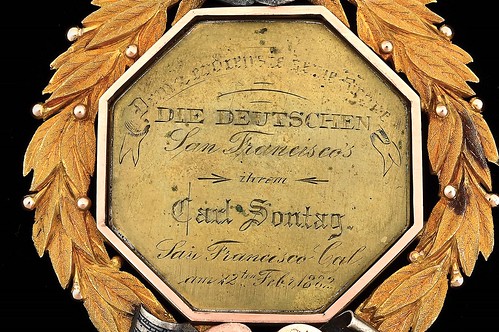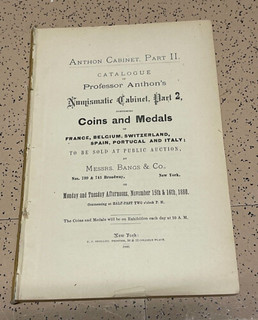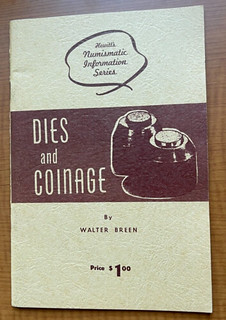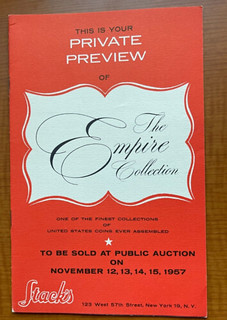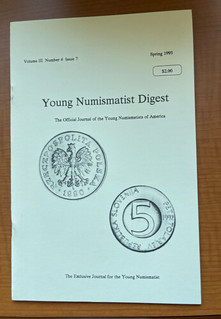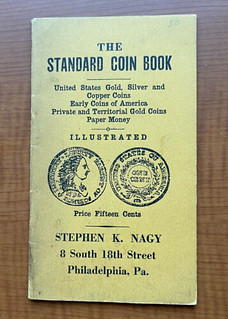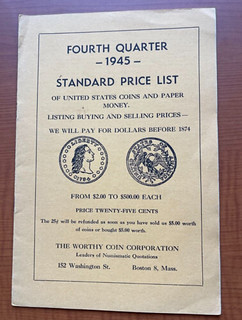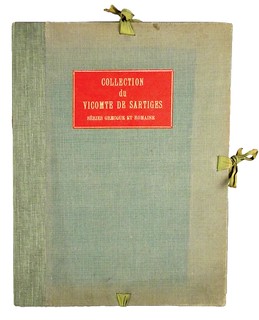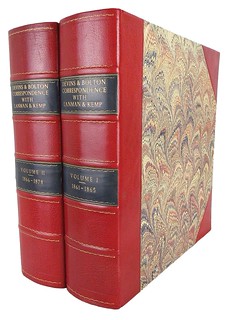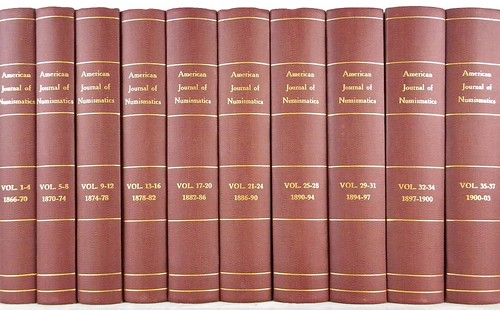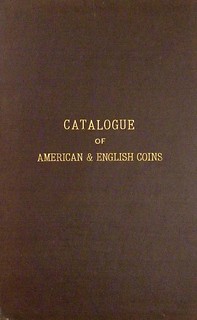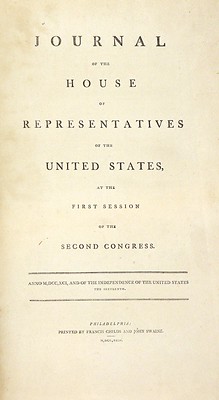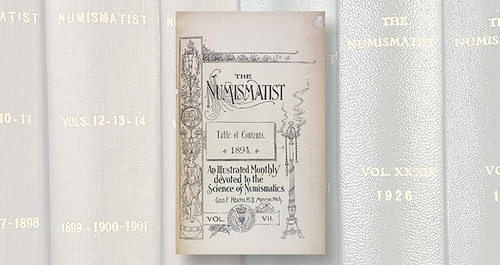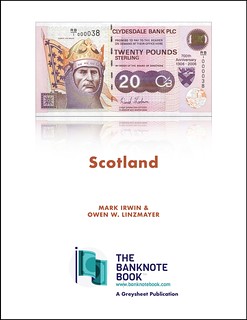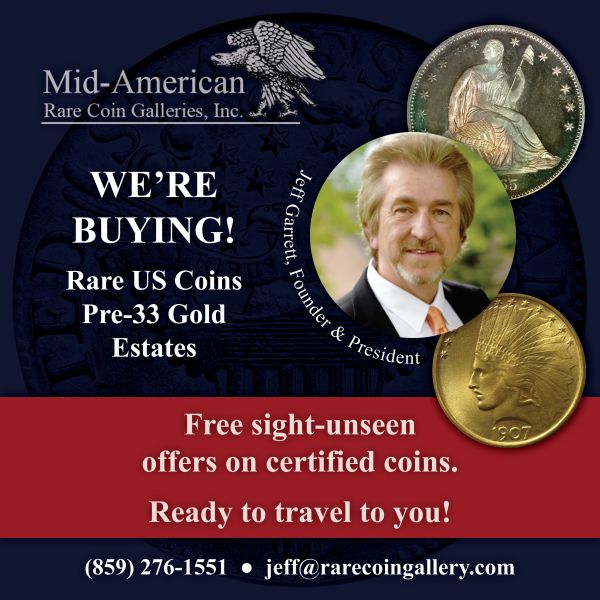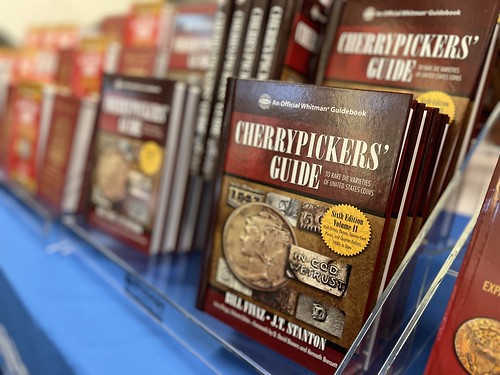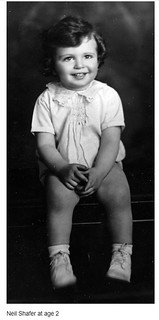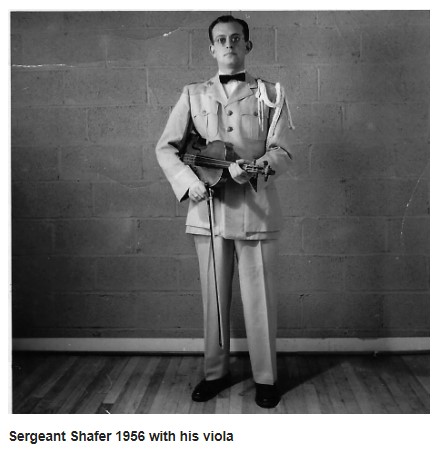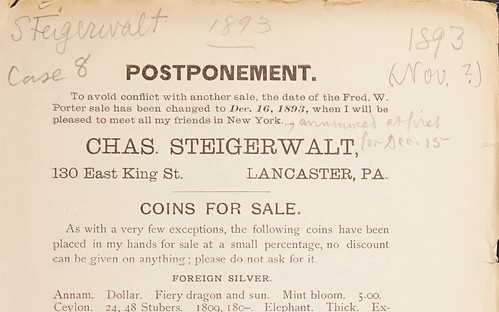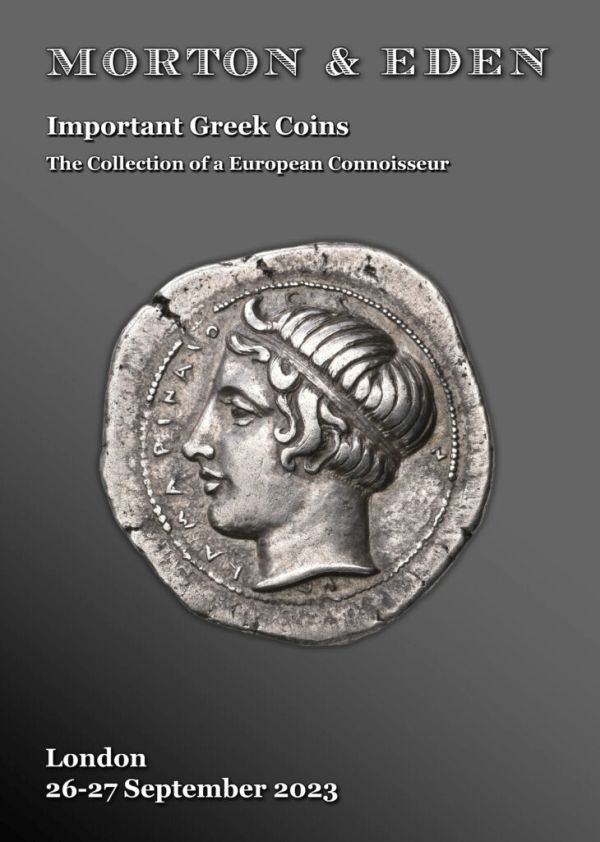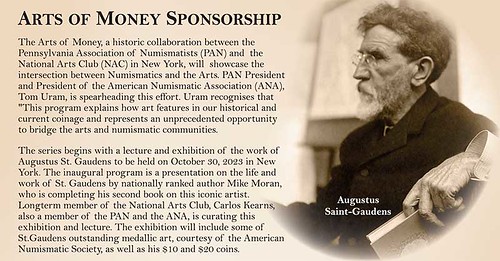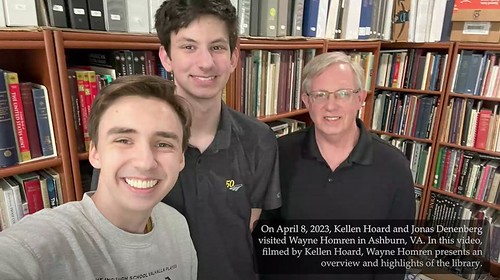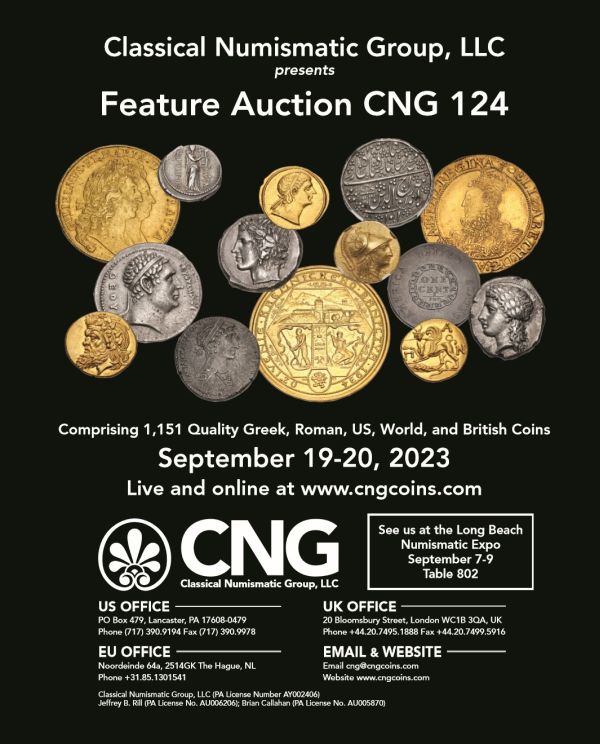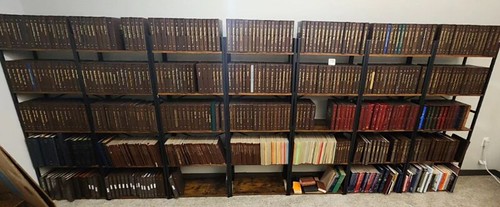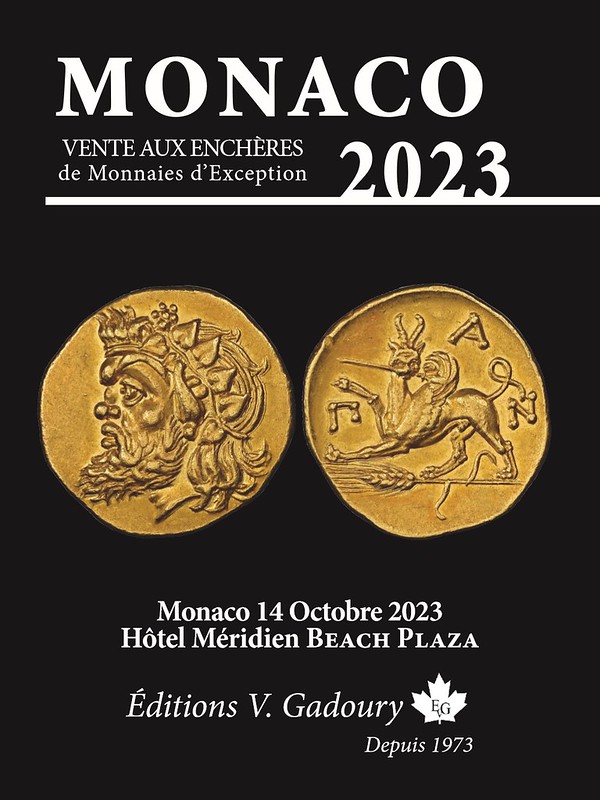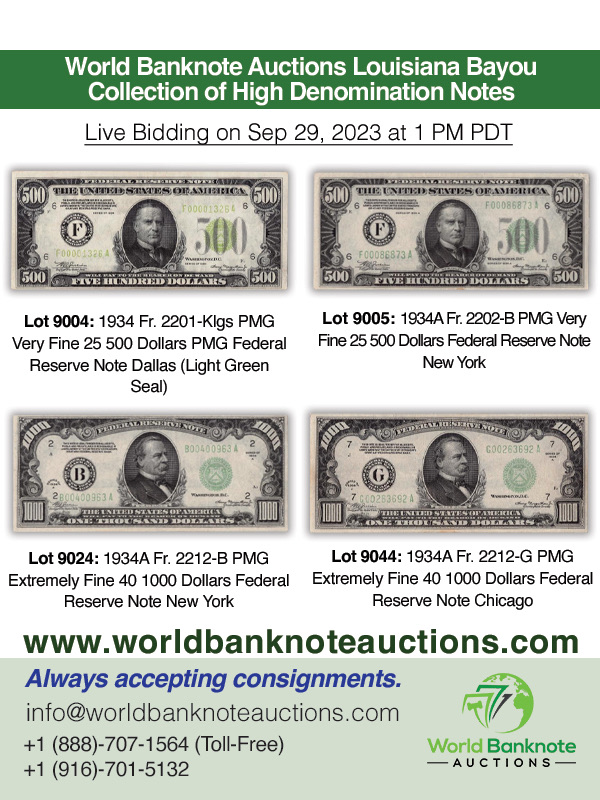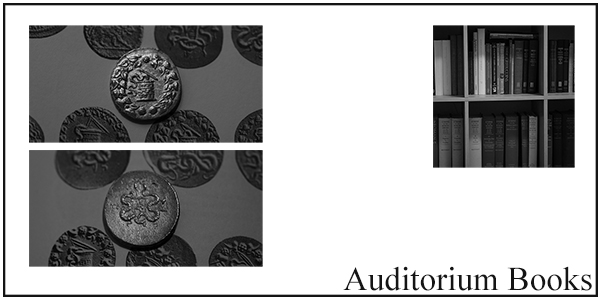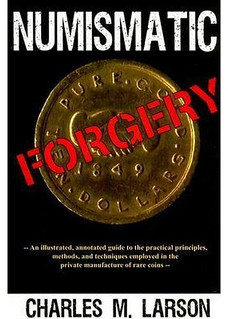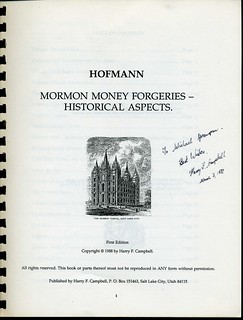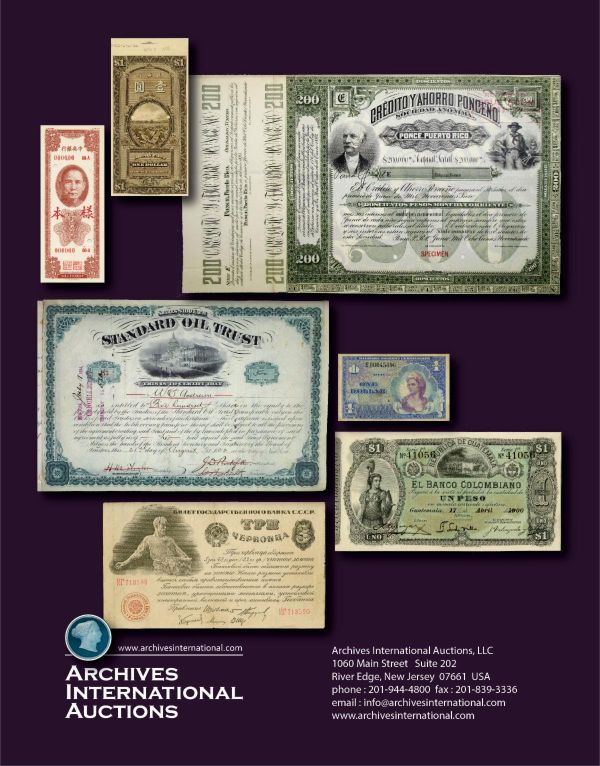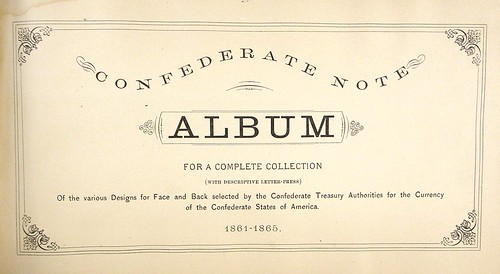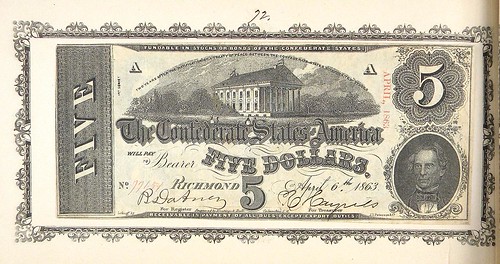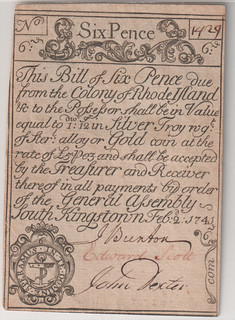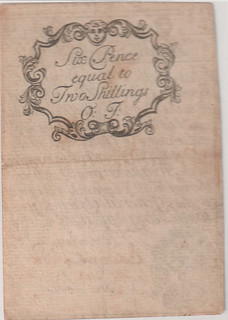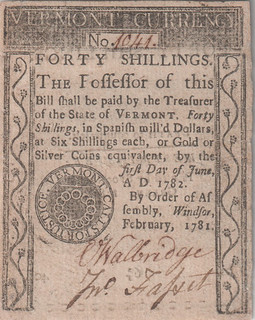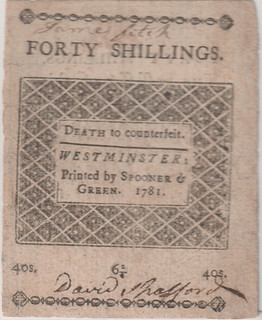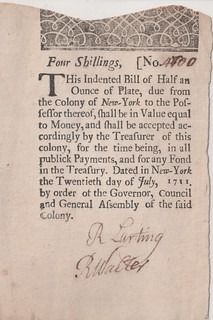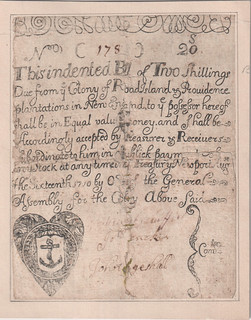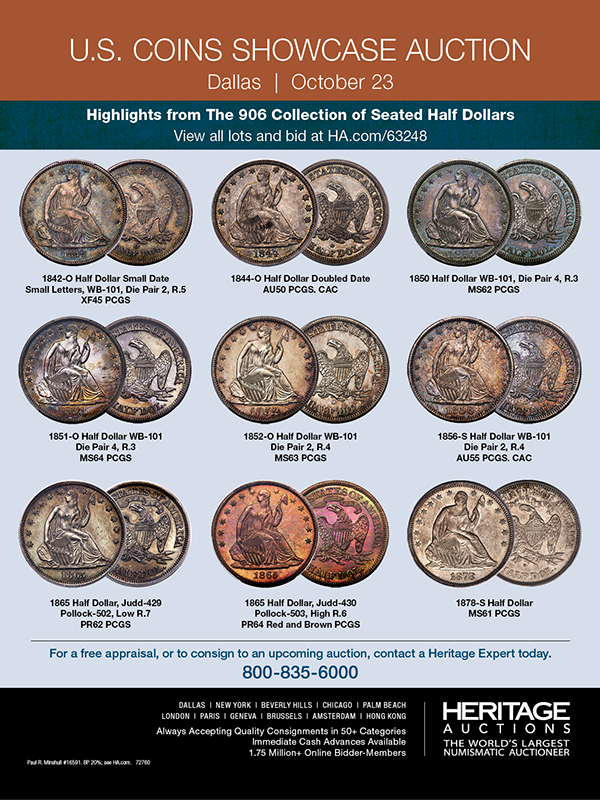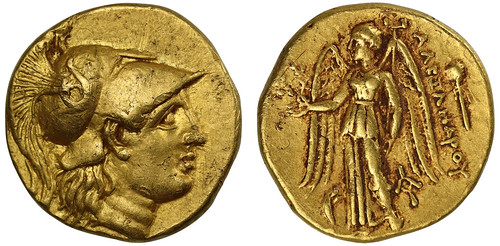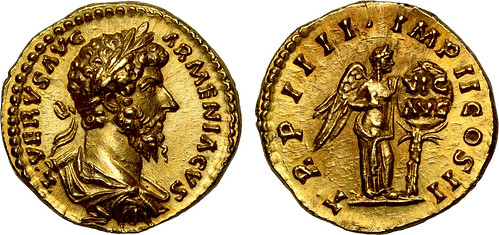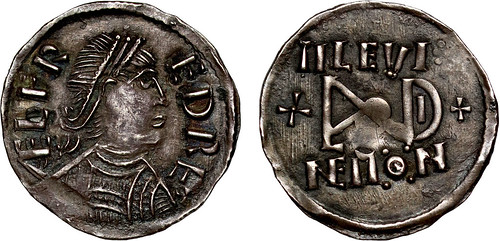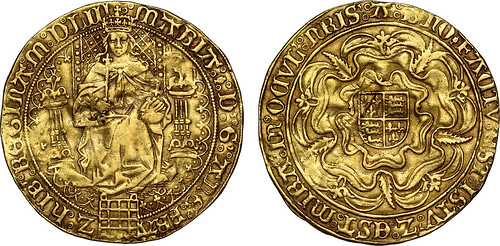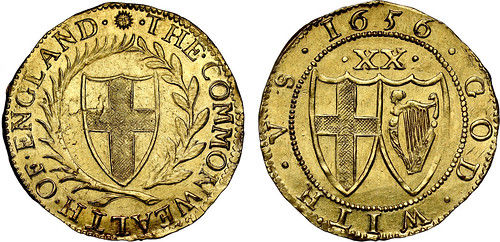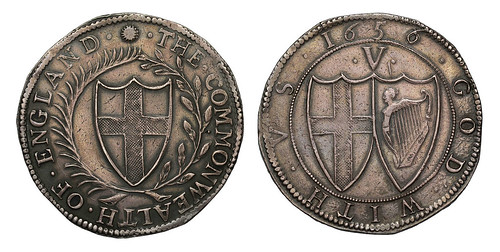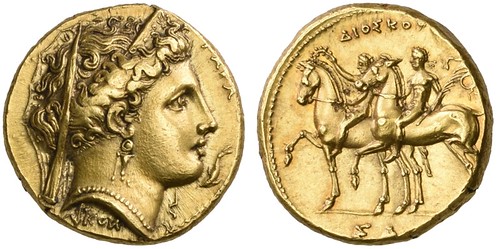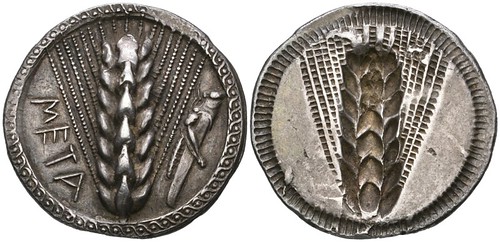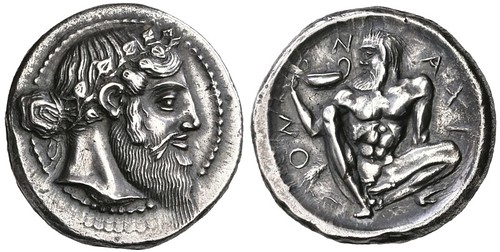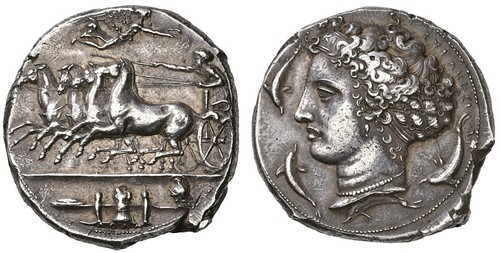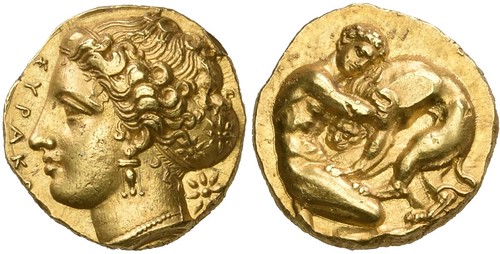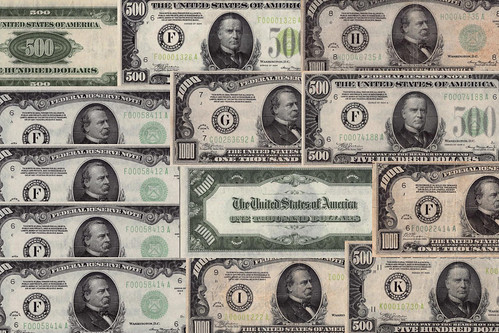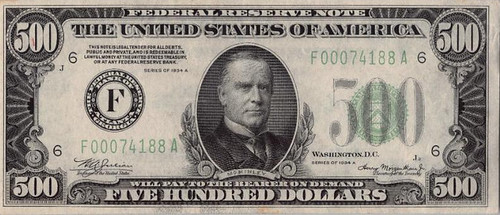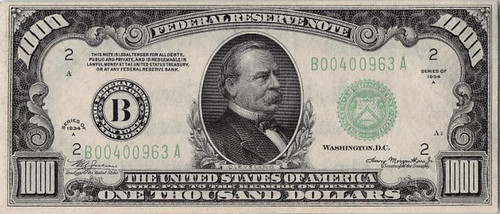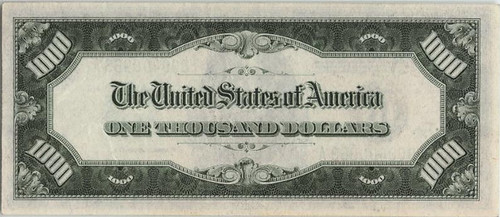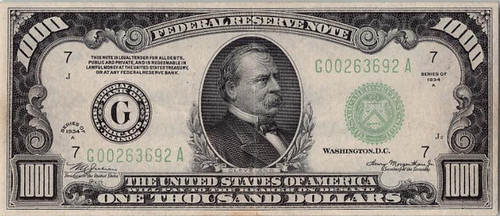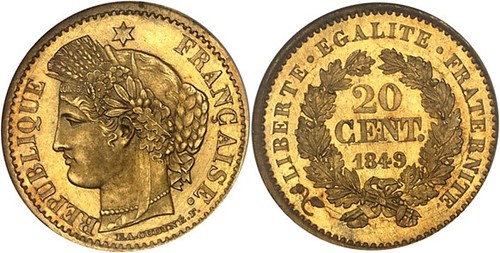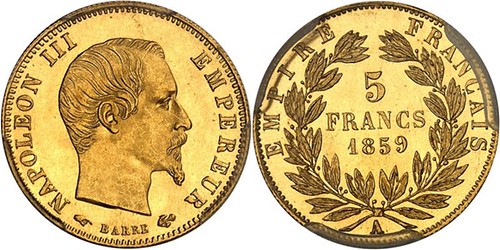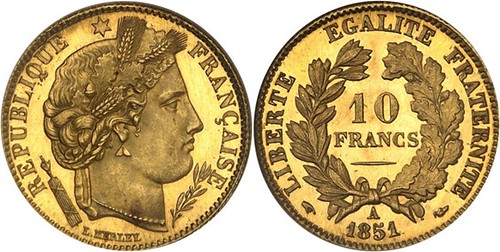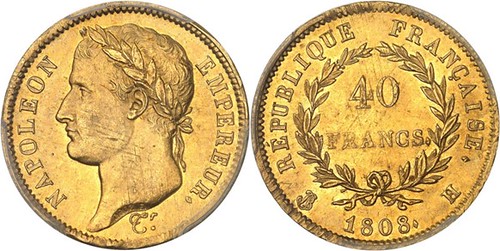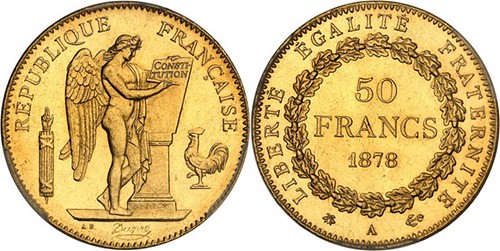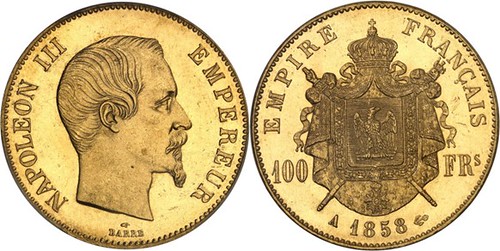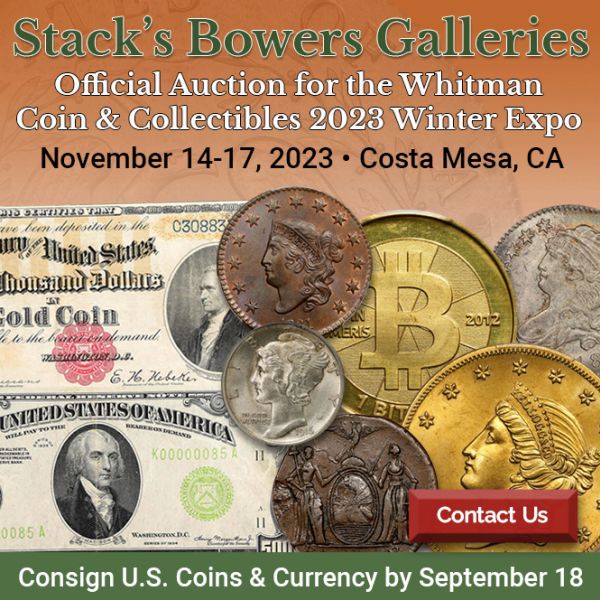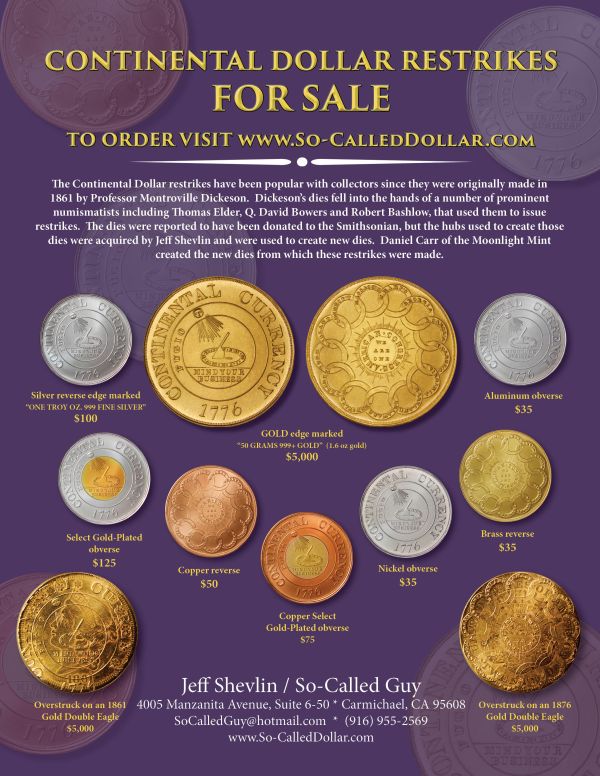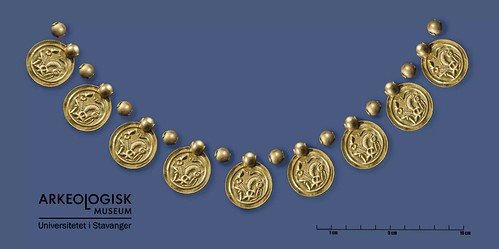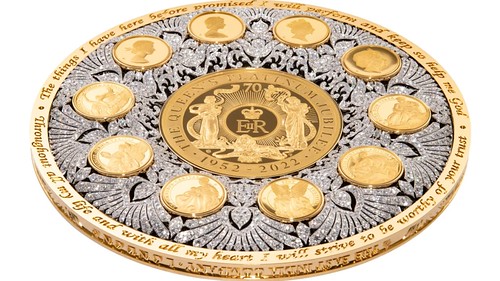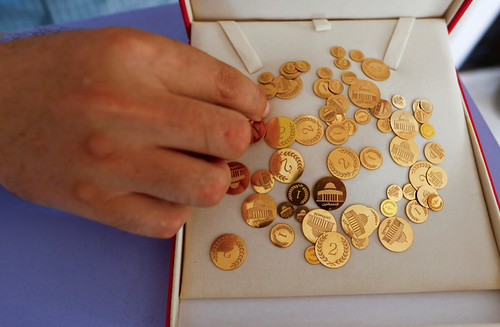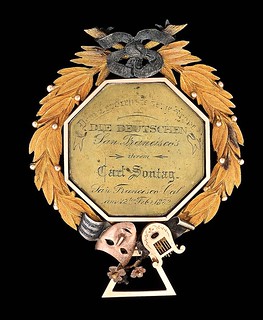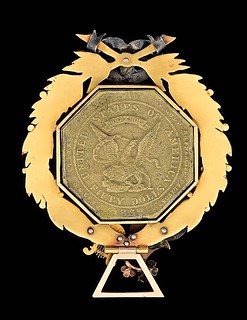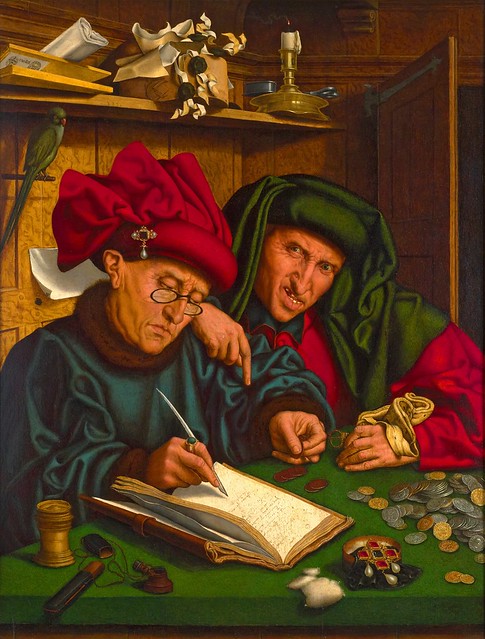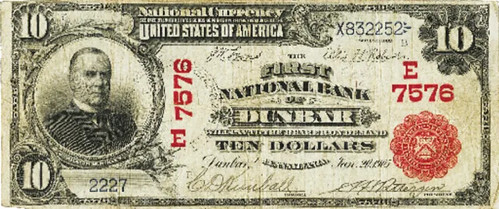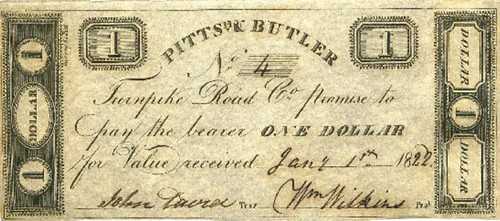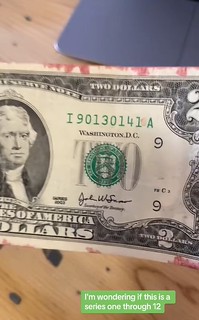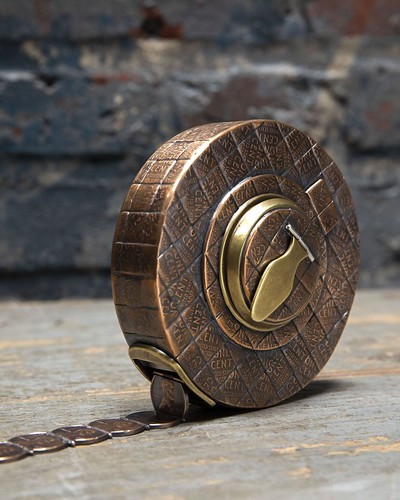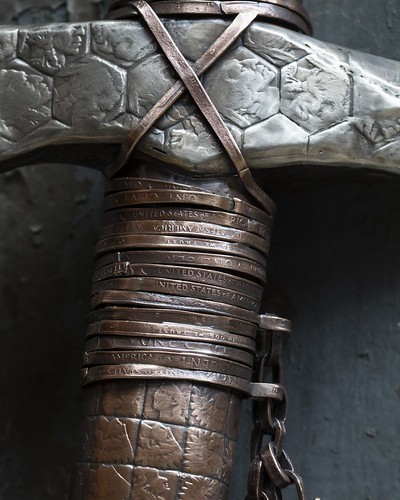
Visit our NBS Sponsors




About UsThe Numismatic Bibliomania Society is a non-profit association devoted to the study and enjoyment of numismatic literature. For more information please see our web site at coinbooks.org SubscriptionsThose wishing to become new E-Sylum subscribers (or wishing to Unsubscribe) can go to the following web page link MembershipThere is a membership application available on the web site Membership Application To join, print the application and return it with your check to the address printed on the application. Print/Digital membership is $40 to addresses in the U.S., and $60 elsewhere. A digital-only membership is available for $25. For those without web access, write to: Charles Heck, Treasurer AsylumFor Asylum mailing address changes and other membership questions, contact Chuck at this email address: treasurer@coinbooks.org SubmissionsTo submit items for publication in The E-Sylum, write to the Editor at this address: whomren@gmail.com BUY THE BOOK BEFORE THE COIN |
- WAYNE'S WORDS: THE E-SYLUM SEPTEMBER 10, 2023
- ANA ACQUIRES FIRST PRINTED NUMISMATIC BOOK
- KENNY SAMMUT OFFERS NUMISMATIC PAMPHLETS
- KOLBE & FANNING SEPTEMBER 2023 SALE HIGHLIGHTS
- NEW BOOK: GOLD COINS IN THE BANGLADESH MUSEUM
- BANKNOTE BOOK SCOTLAND CHAPTER PUBLISHED
- NEW BOOK: IT'S HER STORY: SACAJAWEA
- CHERRYPICKERS' GUIDE SECOND PRINT RUN
- MORE ON NEIL SHAFER
- FRED SCHWAN REMEMBERS NEIL SHAFER
- AN NNP CHARLES STEIGERWALT TRIUMVIRATE
- VIDEO: EAC AUCTION RETROSPECTIVE 1975-2006
- ARTS OF MONEY SPONSORSHIP
- NOTES FROM E-SYLUM READERS: SEPTEMBER 10, 2023
- DANSCO ALBUM COLLECTION UPDATE
- GRADING SERVICE LAUNCHED: COLLECTIBLE MARKET QUALIFIED
- VOCABULARY TERM: OBSOLETE
- RAYMOND FRANCIS HANISCO (1950-2014)
- BILL GROOM INTERVIEW, PART TWO
- NUMISMATIC CORRESPONDENCE: STUFF OF HISTORY
- THIAN CONFEDERATE NOTE ALBUM
- KAGIN'S TO OFFER FORD COLONIAL NOTES
- SOVEREIGN RARITIES AUCTION 10
- MORTON & EDEN SEPTEMBER 2023 GREEK SALE
- WORLD BANKNOTE AUCTIONS LOUISIANA BAYOU SALE
- MDC OCTOBER 2023 FRENCH COLLECTION GOLD
- CELTIC RAINBOW CUP COIN FOUND IN GERMANY
- GOLD MEDALLIONS FOUND IN NORWAY
- 'THE CROWN' GIANT COIN FOR ELIZABETH II
- GAZA DENTIST MAKES GOLD COINS
- KARL GOETZ MEDALS ON BOOM AMERICA
- 1882 CARL SONTAG $50 GOLD SLUG MEDAL
- REYMERSWAELE'S "TWO TAX COLLECTORS"
- LOOSE CHANGE: SEPTEMBER 10, 2023
- MONEY ART OF STACEY LEE WEBBER
- FEATURED WEBSITE: MAGIC TOKEN SOCIETY
Click here to read the thin version on the web
Click here to subscribe
Click here to access the complete archive
To comment or submit articles, reply to whomren@gmail.com
Content presented in The E-Sylum is not necessarily researched or independently fact-checked, and views expressed do not necessarily represent those of the Numismatic Bibliomania Society.
WAYNE'S WORDS: THE E-SYLUM SEPTEMBER 10, 2023
 New subscribers this week include:
Jay Johnson of the Houston Numismatic Exchange, courtesy Barry Tatum;
and
Christopher Muns.
Welcome aboard! We now have 7,617 subscribers.
New subscribers this week include:
Jay Johnson of the Houston Numismatic Exchange, courtesy Barry Tatum;
and
Christopher Muns.
Welcome aboard! We now have 7,617 subscribers.
Thank you for reading The E-Sylum. If you enjoy it, please send me the email addresses of friends you think may enjoy it as well and I'll send them a subscription. Contact me at whomren@gmail.com anytime regarding your subscription, or questions, comments or suggestions about our content.
This week we open with the first printed numismatic book, an offering of numismatic pamphlets, more Kolbe & Fanning literature sale highlights, three new books, more on Neil Shafer, updates from the Newman Numismatic Portal, and more.
Other topics this week include banknotes of Scotland, Dansco albums, hobby industry changes, an auction-palooza of fall sales, metal detecting finds, a gigantic coin for Queen Elizabeth II, Karl Goetz medals, and magic tokens.
To learn more about Guillaume Budé's De Asse et Partibus Eius Libri Quinq, the Young Numismatist Digest, the William F. Gable and Peter Gschwend collections, The Numismatist, the Cherrypickers' Guide>, Charles Steigerwalt, Mark Hofmann, Raphael Thian, frozen dates, numismatic correspondence, rainbow cups, the London Monogram Coinage of Alfred the Great, playful dolphins and Reymerswaele's "Two Tax Collectors", read on. Have a great week, everyone!
Wayne Homren
Editor, The E-Sylum
ANA ACQUIRES FIRST PRINTED NUMISMATIC BOOK
Here's the announcement of a great new acquisition for the American Numismatic Association's Dwight N. Manley Library. -Editor
Dr. Bruce D. Wonder, left, presenting Budé's De Asse et Partibus Eius Libri Quing to ANA Library Manager Akio Lis.
The American Numismatic Association (ANA) Dwight N. Manley Library contains many rare and old books covering a variety of numismatic topics. Numismatic bibliophile and coin dealer Dr. Bruce D. Wonder recently added to this collection by donating a copy of the first edition of Guillaume Budé's De Asse et Partibus Eius Libri Quinq, which is recognized as the first printed numismatic book. The book covers ancient Greek and Roman coins, includes definitions for early numismatic terminology, as well as early references to coin measurements. Budé was one of the great French scholars and philosophers of the 16th century and his works include treatises on law and politics, analyses of ancient European cultures, and treatises on the arts.
The volume was purchased by Dr. Wonder in 2012 from Kolbe & Fanning's The 2012 New York Book Sale
and featured in his article in the March 2014 issue of The Numismatist entitled A Very Special Anniversary,
written to commemorate the 500th anniversary of its publication on March 15, 1514. Also bound in this volume are two legal treatises by Budé, one a later edition of and one an addenda to his earlier work Annotationes in XXIV Pandectarum libros. The provenance of this copy can be traced to John Drury's Catalogue XXXII (1978) of numismatic literature where it appeared as item #28.
Dr. Wonder is an Emeritus Professor of Management, having spent most of his 41-year teaching and administrative career at Western Washington University in Bellingham, Washington. His love of numismatics and of the literature thereon has spanned a longer period, beginning at the age of 12 in 1954. By donating this copy of Budé to the Dwight N. Manley Numismatic Library, he hopes that some of the joy he has experienced as its temporary custodian these past 11 years may be experienced by many current and future numismatists who will have access to it.
For more information on ANA's Dwight N. Manley Numismatic Library, see:
Dwight N. Manley Numismatic Library
(https://www.money.org/library/)
KENNY SAMMUT OFFERS NUMISMATIC PAMPHLETS
In an email announcement earlier today, Kenny Sammut notes that he's recently "Added over 200 new numismatic literature listings to my eBay store. Very eclectic group covering many areas of numismatics." Be sure to have a look. Here are some that caught my eye. -Editor
Link to the Numismatic Books/Literature category:
https://www.ebay.com/str/numismaticswithkenny/Numismatic-Books-Literature/_i.html?store_cat=29010782014
Link to the main store page:
https://www.ebay.com/str/numismaticswithkenny
KOLBE & FANNING SEPTEMBER 2023 SALE HIGHLIGHTS
Kolbe & Fanning are holding a numismatic literature sale featuring Canadian and U.S. material, including a consignment from myself. See articles elsewhere in this issue for more information on a couple of the lots. -Editor
 HIGHLIGHTS FROM KOLBE & FANNING SALE 168
HIGHLIGHTS FROM KOLBE & FANNING SALE 168
Kolbe & Fanning Numismatic Booksellers are holding our next auction sale on Saturday,
September 23, 2023, featuring highlights from the Wayne Homren and Richard Cooper
Libraries, along with other rare and out-of-print works on ancient, world and U.S.
numismatics. The Richard Cooper Library is among the finest ever formed on the
subject of Canadian numismatics, and includes important manuscripts and
correspondence from Robert W. McLachlan. The Wayne Homren Library focuses on
U.S. material, and includes his extensive collection of numismatic ephemera. Some
highlights of the sale include:
Lot 76: a complete set of the 48 fine plates illustrating the Vicomte de Sartiges's exceptional collection of Greek and Roman coins, including the supplement
Lot 124: an extraordinary archive of correspondence from the firm of Devins & Bolton, whose extensive use of countermarking has made them numismatically famous
Lot 190: an extensive gathering of correspondence with Robert Wallace McLachlan (1845–1926), Canada's greatest numismatist, comprising over 300 letters received from over 140 correspondents
Lot 203: the unique holograph manuscript of McLachlan's The Copper Currency of the Canadian Banks 1837–1857, one of thirty-four lots of McLachlan manuscripts offered as part of the Richard Cooper Library
Lot 272: John J. Ford, Jr.'s complete set of the American Journal of Numismatics, bound in 17 volumes, plus the separately published Index volume bound to match
Lot 312: a previously unrecorded copy printed on paper vellum of S.H. Chapman's 1914 catalogue of the William F. Gable collection, with plates and in original state, prepared specially for the consignor
Lot 339: the special hardcover edition of Tom Elder's 1908 catalogue of the Peter Gschwend collection, priced, and with plates and addenda
Lot 405: a finely bound complete set of Mason's Coin and Stamp Collectors' Magazine (1867–1872), one of the earliest important American numismatic publications
Lot 456: an unbound and untrimmed copy of the 1792 Journal of the House of Representatives chronicling the establishment of the United States Mint
Lot 526: an impressive collection of numismatic correspondence including letters from Fred Baldwin, George Clapp, Albert Frey, R.M. Patterson, John Hickcox, and H.R. Linderman, part of the extensive collection of numismatic ephemera formed by Wayne Homren and featured in this auction.
Register early to bid online
Bids may be placed via post, email, phone, as well as online. Kolbe & Fanning use Auction Mobility as our third-party online bidding platform. Auction Mobility is an app-based platform allowing users the ability to participate in the sale through phones, tablets and computers. To register for the sale, bidders must go to bid.numislit.com and sign up. Once you have set up an account, you may browse lots, place advance bids, or participate in the live sale online. Those wishing to participate on their devices can download the Kolbe & Fanning app through the Apple or Google Play Store. The sale has also been listed on Biddr and NumisBids in the near future.
The printed catalogue has been mailed to all active customers on our mailing list. As international mail speeds have been inconsistent, we encourage our foreign clients to consult the electronic catalogue in case their printed catalogue does not arrive promptly. A PDF of the printed catalogue has been posted to our main website at numislit.com for those who prefer that format. Bids placed via post, email, fax or phone must be received by September 22, the day before the sale, in order for them to be processed. Advance absentee bids may also be placed at any time online at bid.numislit.com. Live internet bidding will be available during the sale itself through the same platform.
Kolbe & Fanning Numismatic Booksellers LLC is a licensed and bonded auction firm in the State of Ohio, and our sales are conducted by licensed auctioneers. For more information, please see the Kolbe & Fanning website at numislit.com or email David Fanning at df@numislit.com. To register for the sale, go to bid.numislit.com. We look forward to your participation.
To read the Catalogue PDF, see:
https://indd.adobe.com/view/c452ee0d-6dbd-4ca2-bf71-99c2a6441317
A nice Coin World article by Steve Roach discusses additional highlights of the sale. Lot 269 is my set of The Numismatist. -Editor
Another bulky, but invaluable lot is Homren's complete set of the American Numismatic Association's publication The Numismatist, complete from 1888 to 1980. Volumes 1 to 6 from 1888 to 1893 are present in reprint form. According to the lot description, While condition varies slightly, the set on the whole is near fine, with many of the early years achieving that level of preservation.
The publication is still considered by most ANA members as the primary benefit of membership.
Fanning added, The Numismatist remains one of the mainstays of American numismatic literature, though it has never had scholarly pretensions, nor has it been primarily a commercial publication.
The historical issues are filled with vignettes of collectors of the day, results of important sales, and fascinating gossip on a wide variety of topics.
Fanning calls the bound set one of the great bargains of American numismatic literature
as it carries an estimate of just $1,500.
While the early part of the set is from the library of Donald Miller, the later green bindings are from the library of Richard Foley of Pittsburgh. I'll miss being able to pull a volume off the shelf to read an article I learned about online - digitized books are just a photo album after all, and it's easier and more enjoyable to turn the physical pages. Reading the actual volumes printed a hundred years ago provides a direct tactile connection to numismatics of the bygone era. -Editor
To read the complete article, see:
Kolbe & Fanning's literature auction on Sept. 23
(https://www.coinworld.com/news/us-coins/kolbe-fanning-s-literature-auction-on-sept-23)
To read the earlier E-Sylum articles, see:
KOLBE & FANNING SEPTEMBER 2023 SALE ANNOUNCED
(https://www.coinbooks.org/v26/esylum_v26n36a03.html)
MARK COLLET AND THE 1851 ROPER SALE
(https://www.coinbooks.org/v26/esylum_v26n36a18.html)
NUMISMATIC AMERICANA: DREAMERS, COLLECTORS, AND THIEVES
(https://www.coinbooks.org/v26/esylum_v26n36a19.html)
NEW BOOK: GOLD COINS IN THE BANGLADESH MUSEUM
A new book has been published on the gold coins in the Bangladesh National Museum. -Editor
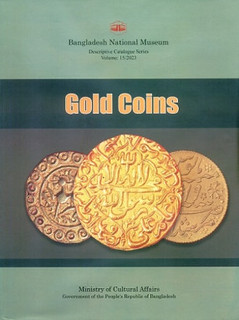 A Descriptive Catalogue of the Gold Coins in the Bangladesh National Museum
A Descriptive Catalogue of the Gold Coins in the Bangladesh National Museum
This catalogue, one of several planned by the Bangladesh National Museum, contains a representative selection of Gold Coins in the Bangladesh National Museum. This museum has a rich collection of diverse coins including silver, copper, gold, it's about fifty-eight thousand coins at present in Bangladesh National Museum vault. Currently there are 747 gold coins among the collected coins in Bangal....
For more information, or to order, see:
A Descriptive Catalogue of the Gold Coins in the Bangladesh National Museum
(https://www.bagchee.com/books/BB137848/a-descriptive-catalogue-of-the-gold-coins-in-the-bangladesh-national-museum)
BANKNOTE BOOK SCOTLAND CHAPTER PUBLISHED
A new chapter of The Banknote Book has been published by CDN - a complete 248-page catalog covering 3,994 varieties of notes from all nine national issuers in Scotland from 1696 to present. -Editor
To subscribe to The Banknote Book, see:
https://www.greysheet.com/publications/the-banknote-book-world-paper-money
To read the complete article, see:
Scotland chapter now available
(https://banknotenews.com/?p=41048)
NEW BOOK: IT'S HER STORY: SACAJAWEA
Sacajawea coin model Randy'L Teton has authored a new children's book about the coin's subject. -Editor
 Ever since she was young, Fort Hall woman Randy'L Teton has been sharing stories about Sacajawea to all who would hear.
Ever since she was young, Fort Hall woman Randy'L Teton has been sharing stories about Sacajawea to all who would hear.
First as a museum attendant at the Fort Hall Museum at the age of 14, where she would teach tourists about the Lemhi Shoshone woman who helped guide the Lewis and Clark Expedition through hundreds of miles of terrain.
Then it was during tours after she was selected as the model for the Sacajawea U.S. dollar coin, where she had the opportunity to travel across the country with the United States Mint and tell many people about the woman's life.
Now, Teton will be sharing Sacajawea's story once more and this time in written form with her graphic novel, It's Her Story: Sacajawea,
which is published by Sunbird Books, illustrated by Aly McKnight and available for purchase on Amazon now.
This has actually been a dream of mine to have a children's book from an indigenous perspective,
said Teton, an enrolled member of the Shoshone-Bannock Tribes of Fort Hall. The book is from a tribal perspective and it's the first children's book that is actually written by the perspective of one, with the illustrations also by a tribal illustrator.
The novel, which is aimed at children ages seven through ten, focuses on Sacajawea's story in a way that will captivate young audiences, but one of the unique aspects of the novel is that it was written by an author who'd learned about the woman through oral storytellers in her tribe.
I would really like for the school districts to pick up the book and start including it in their fourth grade curriculum,
she said.
It's Her Story: Sacajawea
is Teton's first novel, but her experiences of being the model for the Shoshone woman and telling her history is something that she'd like to share in a memoir one day.
I do hope to have a memoir on my experience of being selected as the model because I was able to experience a lot of amazing things and meet a lot of amazing people,
said Teton, who was also the youngest and only living model for U.S. currency. I traveled with the United States Mint for two years. That experience alone is very unique because they never had a living model on a coin…But I was given her voice on her behalf as a young tribal girl and (with) her story there's just so many different misunderstandings about her history and I'm hoping with this book it gives some truth to what she experienced as a young girl who was taken from her people.
For more information, or to order, see:
It's Her Story Sacajawea A Graphic Novel Hardcover – September 19, 2023
(https://www.amazon.com/Its-Story-Sacajawea-Graphic-Novel/dp/1503765792)
To read the complete article, see:
Randy L'Teton writes graphic children's novel about Sacajawea's life
(https://www.idahostatejournal.com/news/local/randy-l-teton-writes-graphic-childrens-novel-about-sacajawea-s-life/article_3c4fb2f4-4c27-11ee-81f2-7f0cec759a8d.html)
THE BOOK BAZARRE
CHERRYPICKERS' GUIDE SECOND PRINT RUN
Whitman Publishing reports a sellout of the first printing of the new sixth edition, volume II, Cherrypickers' Guide to Rare Die Varieties, prompting a second print run. Here's the press release. -Editor
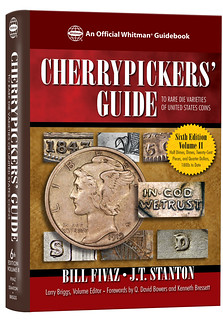 The first print run of the sixth edition, volume II, of the Cherrypickers' Guide to Rare Die Varieties is nearing a sellout. Whitman Publishing will order a second print run to keep up with collector demand, with no interruption in availability.
The first print run of the sixth edition, volume II, of the Cherrypickers' Guide to Rare Die Varieties is nearing a sellout. Whitman Publishing will order a second print run to keep up with collector demand, with no interruption in availability.
The book debuted at the American Numismatic Association World's Fair of Money in Pittsburgh, August 8–12, 2023. Sales at the show were limited to one copy per customer.
The Cherrypickers' Guide was one of our best sellers in Pittsburgh,
said Whitman vice president of sales Dawn Burbank. Collectors and dealers bought every advance copy we had, and thousands more have shipped from our main inventory.
Coin dealer Larry Briggs, one of the most famous die-variety specialists in the country, reported strong bourse activity at the ANA show. Briggs served as volume editor for the latest Cherrypickers' Guide, updating every entry and consulting with other experts to add new coins.
As part of the ANA's Money Talks
educational programming, Whitman publisher Dennis Tucker presented Cherrypicking Rare Coins in 2023 and Beyond.
He discussed some of the factors contributing to collectors' growing interest in die varieties. Among them:
- The coin market in general has been hot for the past two or three years.
- The Internet has brought collectors together. Hobbyists have unprecedented access to information, including high-resolution photographs.
- Book publishing has experienced a renaissance, and websites make it easy to self-publish, ask questions, share ideas, and educate other collectors.
- Large coin shows have been seeing high attendance numbers, with many active dealers.
- Competitive registry sets run by PCGS and NGC have introduced an element of friendly competition that can drive up prices (and excitement) if two serious collectors both need the same coin to finish or upgrade their set.
Tucker's observations on the die-variety market include the following:
- More than two dozen Barber dime varieties (mostly repunched dates) were deleted from the fifth edition of the Cherrypickers' Guide for lack of collector interest, and about a dozen new Barber dimes were added to the sixth edition. This is a case-study in how collector interest ebbs and flows for specific varieties.
-
Gold coins, long overlooked among cherrypickers, are starting to show more significant spread between
normal
andvariety
pricing. In the past, collectors wouldn't pay much of a premium for (for example) a doubled-die Saint-Gaudens $20 gold piece, because the normal coin already has such a high bullion value. But that's changed in recent years, as specialists pay more attention to the rarity of certain gold die varieties. - Hobby clubs and organizations produce and publish a great deal of new research on die varieties. Whitman Publishing recommends joining these clubs to learn more about particular coin series. One especially helpful group for the latest Cherrypickers' Guide was the Liberty Seated Collectors Club (www.lsccweb.org), which studies the coins of the 1830s to 1890s, including half dimes, dimes, quarter dollars, half dollars, and dollars. Another was the Barber Coin Collectors Society (www.barbercoins.org), which studies the coins designed by chief engraver Charles Barber, minted in the late 1800s and early 1900s.
If a die variety is included in the Cherrypickers' Guide, it's among the most popular and actively traded in its series. In the sixth edition, volume II, most of the new die varieties are among Roosevelt dimes (split evenly between silver and clad issues), Liberty Seated quarters (mostly from the 1850s to the 1870s), and Washington quarters (especially the silver series up to 1964).
Looking ahead to volume III, which will come out in 2024:
- There are entire new chapters on Bust half dollars.
- Most of the new die variety listings are among Liberty Seated half dollars, Franklin half dollars, Morgan silver dollars, and Peace dollars.
- There's a new chapter on U.S./Philippine die varieties of 1903–1945.
Less popular die varieties these days include half dimes in general, twenty-cent pieces, trade dollars, and classic commemoratives. There are new varieties in these series, but collector interest isn't as strong as in more popular areas.
The new 320-page spiralbound-hardcover Cherrypickers' Guide can be ordered for $39.95 online, including at Whitman.com, and is available in bookstores nationwide.
About the Cherrypickers' Guide
To cherrypick
is to examine coins that appear normal at first glance, seeking those with unusual characteristics—overdates, repunched mintmarks, doubled and tripled dies, and similar features—that reveal them to be rare and valuable. The Cherrypickers' Guide uses close-up photographs and text descriptions to show collectors what to look for. It includes rarity ratings and retail values in multiple grades.
For the latest volume, Cherrypickers' Guide coauthor Bill Fivaz and professional numismatist Larry Briggs coordinated edits and updates. They reached out to the hobby community for advice, recommendations, research, market analysis, and photographs. The new volume features more than 440 die varieties, including nearly 80 new additions. The book covers Capped Bust and Liberty Seated half dimes, dimes, and quarters; Barber dimes and quarters; Mercury dimes; Roosevelt dimes; twenty-cent pieces; Standing Liberty quarters; and Washington quarters, including the State, D.C., Territorial, and National Park series.
Bill Fivaz, a coin collector since 1950, has earned recognition as one of the country's most respected authorities on numismatic errors and die varieties. Volume editor Larry Briggs is well known to the hobby community as a dealer, author, and educator.
Cherrypickers' Guide to Rare Die Varieties of United States Coins, sixth edition, volume II.
By Bill Fivaz and J.T. Stanton; forewords by Kenneth Bressett and Q. David Bowers; edited by Larry Briggs.
Publication date: August 2023. Retail $39.95. 320 pages, 6 x 9 inches, spiralbound hardcover.
https://whitman.com/cherrypickers-guide-volume-ii-6th-edition/
MORE ON NEIL SHAFER
The hobby continues to honor the memory of author and researcher Neil Shafer, who passed away on Friday, August 25. First, here's a tribute from the Philippine Collectors Forum by John Riley, as shared by Ray Czahor. -Editor
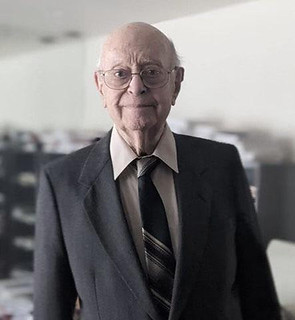 As the Philippine Collectors Forum (P.C.F.) celebrates 20 years as an American Numismatic Association Member Club and an annual gathering at the ANA's summer convention (World's Fair of Money), we are greatly saddened to learn of the passing of Neil Shafer, a Giant in the world of Coins and Paper Money research and collecting. Among many areas, issues of the U.S Philippines 1903-45 was a particular passion.
As the Philippine Collectors Forum (P.C.F.) celebrates 20 years as an American Numismatic Association Member Club and an annual gathering at the ANA's summer convention (World's Fair of Money), we are greatly saddened to learn of the passing of Neil Shafer, a Giant in the world of Coins and Paper Money research and collecting. Among many areas, issues of the U.S Philippines 1903-45 was a particular passion.
Neil Shafer's name was synonymous with the PCF as he attended and participated in nearly every gathering over the years from 2003 onward, including a meeting at the old International Paper Money Expo in Memphis (the 2012 auction of the Greg Pineda collection) and at separate smaller specialized sessions at the yearly Military Payment Certificate fests
(MPC Fest) in Port Clinton, Ohio). Neil was frequently the Featured Speaker at these meetings and it was a regular occurrence that new attendees would seek out Neil for an inscription and signature on their treasured copies of UNITED STATES TERRITORIAL COINAGE FOR THE PHILIPPINE ISLANDS (1961), A GUIDE BOOK OF PHILIPPINE MONEY (1964) and PHILIPPINE EMERGENCY AND GUERRILLA CURRENCY OF WORLD WAR II (1974). Neil was unquestionably the pioneer in this research and publishing: his knowledge and experience was recognized, respected and sought by everyone who attended our meetings over the years.
Although he admitted that early on he had no real, personal connection through military service, etc to the Philippine Islands, he was fascinated by U.S. Federal coin and paper money connections
to those of the Islands and was the first person in the United States to recognize and appreciate the unique series of coins, tokens and paper money as bona fide regular U.S. issues. Most importantly for us now, he actually DID something tangible about it while working for Whitman Publishing - namely, he produced the seminal collector references.
In later years, Neil continued to regularly present topics of interest to the PCF and unfailingly would pull some amazing artifact out of his battered brown briefcase to delight and captivate us! Neil embraced modern technology, no small feat for members a fraction of his age, and it would be a boon to keeping the numismatic conversation going in the age of COVId-19. We conducted two virtual meetings
via the ZOOM application during the Pandemic and Neil expertly provided video interaction on financial instruments made of paper - Manila's Santo Tomas Internment Camp meal chits, early U.S. Army Camp Exchange tokens
and other similar items in paper - all quite rare. Neil even invented a new word - Exographica - for the topic (a nod to Russell Rulau's now-standard term of exonumia for tokens). Neil kept us in touch with ongoing publishing and encouraged us all along the way to participate in his latest co-written effort, with co-author Matthias Voight, to be published on Volume II of Philippine Emergency Guerrilla
paper issues.
But, larger than all else, was that he WELCOMED all at every collecting level and he truly ENCOURAGED everyone he encountered in this wonderful community of ours. That simple kindness and skill in taking time to listen and graciously sharing what he had learned over the years is the shining model of what it means to be a MENTOR. We take away now this vital lesson to do our best in living up to Neil's example.
The PCF has donated $100 to the American Alzheimer's Association in Neil's name.
Here is an excerpt from Nancy and John Wilson's lengthy nomination for Neil's 2014 Farran Zerbe Award from the American Numismatic Association, republished with permission from MPCGram Series 24 No. 2586 2 Sep 2023. -Editor
Neil's collecting began in Chicago (the site of the 2014 WFOM) around 1943 or 1944. Talking to him some years back while trying to get a history of this interesting person we found out that his collecting interests gradually kept widening and went approximately as follows: U. S. coins out of circulation by date, then by purchase, then world coins with concentration on Philippines and Latin America but including much of the rest of the world, some ancients and medals, Civil War and Hard Times tokens, then into U. S., Confederate and world paper currency, then into U. S. and world local paper issues, Depression and Panic scrip, checks, stocks and bonds. In other words, Neil Shafer's interests covered just about the entire numismatic field.
We have known Neil since the days he worked in Racine, WI for Western Publishing Co. Neil is a coin club officer (and founder of at least one coin club), collector, teacher, author, speaker, researcher, exhibitor and judge. He has spent an entire lifetime working for the advancement of the numismatic hobby in the area of syngraphics, as well as other specialties. His study, research and references in the field of world paper money, modern U. S. paper money, U. S. College currency (as editor), Depression and Panic scrip, Philippine and Guerrilla paper money have helped our numismatic hobby immeasurably. These award winning references assist numismatists worldwide with their collecting and dealing of paper money. His current series of articles for Bank Note Reporter goes back to 1987; in these writings Neil is always trying to expand collectors' horizons.
In about 1975 one of the most important references to come onto the market place was the Standard Catalog of World Paper Money. Though Albert Pick's name appears on the cover, over three decades, from 1975 to 2005, Neil Shafer has contributed greatly to making this one of the most important references in our hobby. Today, it is split into several different volumes with a different editor. Neil also worked for Western Publishing Co (Whitman) from 1962 to 1975 as numismatic editor and senior editor 1976 to 1981. Neil worked for Krause Publications from 1981 to 1985. Please see the references below to the numismatic books that Neil Shafer authored. His name will also be found in numerous other references including the most sold coin book in the world, A Guide Book of U. S. Coins
Edited by Kenneth Bressett. Numerous other numismatic references also have his name as a contributor, be they about coins, tokens & medals or paper money. Neil always shares his knowledge with anyone who asks.
In the past, Neil has assisted ANA as a Committee Chairman. At the 1986 ANA coin convention he served as Program Chair. He also is an ANA Summer Seminar instructor and continues to help ANA whenever he is called to do so. Neil has probably written thousands of articles for local coin clubs, state, regional and national organizations. We think many dozens of organizations have benefited from Neil's research and writings. He continues to have a column for Krause (F+W) Publications Bank Note Reporter. Neil also exhibits at the local, state, regional and national level – including ANA. He is a certified ANA Exhibit Judge and he can always be seen at our conventions judging exhibits. Over many years he has literally given probably hundreds of talks at all levels of the hobby including the ANA Numismatic Theater. He has also given numismatic presentations in several different countries.
Numismatic Accomplishments:
Over the past 60 plus years Neil Shafer has accomplished very much in the numismatic hobby- probably two lifetimes worth of numismatic achievements, and his work isn't done yet. He proudly received his 50 year ANA medal in 2002. His knowledge covers many of the world's more obscure bank notes as well as specialized issues from the United States. He will be a 62 year member of ANA in 2014. A resume of Neil Shafer would read: Collector, Author, Researcher, Speaker (Lecturer), Club Officer, Educator, Teacher, Exhibitor and Judge (of exhibits). He is also considered one of the worlds' top authors and researchers for world paper money. Neil also speaks and writes Spanish; he has helped many in and out of the hobby with translations. With few exceptions, very few numismatists have been involved in our hobby for over six decades. One of his greatest accomplishments is his work in the syngraphic field. Since The Standard Catalog of World Paper Money
(includes U. S. issues) was released in 1975, Neil went from a Special Consultant to a Co-Editor in 1981, which title he held up to 2005. Neil's many other references and articles are listed in this biography.
Neil has been an instructor at the ANA Summer Seminar numerous times. He has given many hundreds of talks at conventions and coin clubs. Whether it is a local or national coin club or a small coin show to a large one he will probably be on the program to give an educational program. It is likewise with exhibits and judging. He has exhibited at all size coin shows as well as served as an ANA certified judge. He has assisted at Boy Scout coin clinics as well as YN programs. In past NCW events Neil has given talks and/or exhibited. Neil has served at the 1986 Milwaukee ANA convention as the Committee Program Chair. He has received numerous awards for his many contributions, dedication and hard work in the hobby he loves so much.
Published numismatic works:
Panic Scrip of 1893, 1907 and 1914, An Illustrated Catalog of Emergency Monetary Issues, 2013, Co-authors Neil Shafer and Tom Sheehan. This first ever reference on Panic Notes was decades in the making.
Standard Catalog of World Paper Money by Albert Pick, Krause Publications, Special Consultant 1975-81; Co-Editor 1981-2005.
A Guide Book of Modern United States Currency. Eight Editions, Western Publishing Co., Racine, WI 1965 to 1979 (eight editions published).
United States Territorial Coinage for the Philippine Islands. Whitman Publishing Co., 1961.
A Guide Book of Philippine Paper Money, Whitman Publishing Co., 1964. This was a landmark publication 30 years ahead of its time.
Philippine Emergency and Guerrilla Currency of WW II, Whitman Publishing Co., 1974.
Let's Collect Paper Money, Whitman Publishing Co., 1976.
Standard Catalog of Depression Scrip of the United States the 1930s including Canada and Mexico, with some date from Ralph A. Mitchell), Krause Publications, Iola, WI. 1985.
Banknotes, Scrip and Paper Ephemera of Milwaukee, Editor, 1990, Olympic Speed Printing, Milwaukee, WI.
College Currency – Money for Business Training, Editor, Port Clinton, OH. 1992 (Editor)
New England Journal of Numismatics, Editor-in-Chief 1986-87.
Writes a monthly column for Krause Publications (F+W), Paper Money News & Views for Bank Note Reporter (since 1987).
Wrote a column on Paper View for Krause Publications (F+W), in Numismatic News 1996-2001.
Paper Money booklets for the SPMC and PCDA, Wonderful World of Paper Money and Collecting Fractional Currency
MANA Journal on Canadian Large Cents ‘Aging' Varieties, 1957.
Helped pioneer the study of Morgan Die varieties in 1964 through Whitman Numismatic Journal.
Neil also wrote several important articles for numismatic publications on Cuban and Guatemala paper money.
Neil Shafer joined Whitman Publishing in 1962 and wrote many articles for Whitman Numismatic Journal. A major article written with Ken Bressett on Allied Military Currency was published in 1968. He also edited a number of books and other standard references while at Whitman.
The MPC Gram is an email newsletter for collectors of Military Payment Certificates and other military numismatica. To subscribe to the MPC Gram, see: https://guide.us13.list-manage.com/subscribe?u=10eb366ab80344a56657e0d5d&id=58874b37e1 . -Editor
To read the earlier E-Sylum articles, see:
NEIL SHAFER (1933-2023)
(https://www.coinbooks.org/v26/esylum_v26n35a02.html)
KEN BRESSETT REMEMBERS NEIL SHAFER
(https://www.coinbooks.org/v26/esylum_v26n35a03.html)
DENNIS TUCKER REMEMBERS NEIL SHAFER
(https://www.coinbooks.org/v26/esylum_v26n35a04.html)
FRED SCHWAN REMEMBERS NEIL SHAFER
Also with permission, here's another excerpt from MPCGram Series 24 No. 2586 2 Sep 2023. Here, Editor Fred Schwan discusses meeting, befriending and working with Neil over the years. Thank you! -Editor
The great one was standing there talking to another gentleman. It was the annual convention of the Association in Boston (my second, 1973). Neil Shafer had just released the sixth edition of his catalog on United States small size paper money. He had done something very unusual. He had included military payment certificates (MPC)! That was the first time that these notes had been in a book with United States paper money. This was one of many innovations introduced by Neil Shafer, but the first one known to me.
I had some questions, so I took a deep breath and walked right up to the great one. "Mr. Shafer, may I ask you a few questions?"
That was the start of a long friendship. Neil was very gracious. He introduced me to the other gentleman, Amon Carter, Jr.--one of the great collectors--who turned out to also be an MPC collector. The three of us had a very nice chat. I remember the conversation very well. What Neil remembers--he mentions it often--is that I called him Mr. Shafer!
In the world of paper money collecting "Mr. Shafer" is a one name person. "Neil" is known to everyone. Name a specialty and the collectors know and respect Neil. In the world of coins, he is not as well known, but do not underestimate his knowledge, experience, and influence there too!
Neil's life was changed around 1943 when his mother gave him a beautiful, extremely fine 1896 quarter. It was the first coin in his collection. He was fascinated, and hooked. Of course Neil still has the quarter. His father had several Russian coins, among them a copper 5 kopek piece of 1879. He says that he took great delight in buffing that piece in dad's dental office until it was bright red--in VG! He says that he buffed it so much that he "killed it," as it never toned down and still shows the effects of that buffing today. He also fought with his older brother Mort for a Canadian quarter of 1907 that was received by his parents as change. Of course Neil won the fight.
In Phoenix during 1947-55, Neil says that he was able to spend a goodly amount of time learning about many different kinds of U.S. coins and notes through past ANA President V. Leon Belt and Don Sherer (later to become ANA General Secretary). Neil joined the Phoenix Coin Club around 1949 and ANA by 1952.
Another coin that Neil has had for a long time is the 1964 Kennedy half dollar that he obtained on the day that it was released. He has carried it in his pocket every day since then. Very possibly it is the worst Kennedy half in any collection. Furthermore, this half dollar is the plate coin used in the 1965 Handbook of United States Coins--blue book! I often ask to examine it when I see Neil.
He started collecting with coins out of circulation by date, then by purchase, then world coins with concentration on Philippines and Latin America but including much of the rest of the world, some ancients and medals, Civil War and hard times tokens. Then he moved into U. S., Confederate, and world paper money, then into U. S. and world local paper issues, depression and panic scrip, military payment certificates and other military money, checks, stocks and bonds. He not only collected each of these areas, he studied them, researched them, and wrote about them. In most cases the work turned into books that are used by collectors around the world today.
Beyond numismatics, Neil's his skills are also broad. I am sure that Neil would like for me to say that he is a good comedian, an accomplished humorist. Well, he is, but he is a punster and I really do not want to encourage him! Do not get him started, trust me on this. He had a weekly radio show in Milwaukee to spread his version of humor and he will fire puns off at a punishing rate if you give him a chance.
Neil is an accomplished musician. He played in the Air Force band 1955-59. Believe it or not, this was a numismatic opportunity that he seized. The band was stationed at Bolling Air Force Base in Washington, D.C. The band practiced once each day. The rest of the day, Neil dug for notes and coins and he found treasures. Boy oh boy did he find great stuff. He found great coins and notes everywhere--in circulation, in shops, and in junk boxes--that he still has today. Junk box digging is a skill that he has refined and still pursues with amazing success. His eyes sparkle when he tells the story of finding this or that item.
Many years later he conducted a Milwaukee orchestra. Of course he still appreciates music but has retired from playing and conducting.
Neil's big break in numismatics came came in 1961 when he landed a position at Whitman Publications. There he was the right hand man of Ken Bressett and both of them had the opportunity to work for Richard Yeo, known as Dick Yeoman, creator of the Red Book.
Neil loves notes and coins of the Philippines. He began studying, researching, and writing about them in the 1960s. Shortly after joining Whitman he created United States Territorial Coinage for the Philippine Islands. That book was his first book. I counted thirteen different titles and I might have missed some. If you add the multiple editions, Neil is responsible for something like thirty books.
At Whitman he created the first catalogs of Philippine paper money. It was innovative, way ahead of its time. Delivery dates and quantities printed were included for many issues and important new discoveries were published for the first time. The most exciting to me of the discoveries was information about Bureau of Engraving and Printing war time printings of pre war notes for operational use in World War II. Some of these notes were carefully printed then aged to look like circulated notes in order to avoid detection by the Japanese. I still use this book today.
As innovative as his first two Philippine books were, they were nothing compared to the next project--Philippine Emergency and Guerrilla Currency of World War ll. This book all but defines innovation. It is a comprehensive catalog of material that was--and is--little known to collectors! During the war guerillas in the field created an astonishing array of notes for their own use. They printed notes on end leaves from old books, shopping bags, and any other paper that they could find with whatever ink they could find (or make) with any kind of duplicating machine available in facilities that might have to be abandoned at a moment's notice. Remarkable. More remarkable is that Neil gathered the information and organized it in a way that was useful to collectors. By the way, the book is scarce and in high demand! [2023 update: Neil was working on the second edition of this book in his last days. He had a collaborator and I believe that the book will be published in 2023 or 24--Schwan]
Not much later (1985), Neil reached a new innovation high. He created (with Ralph "Curly" Mitchell) Standard Catalog of Depression Scrip of the United States the 1930s including Canada and Mexico. This book too dissected an area virtually unknown to most collectors, and yes, now the book is scarce and sought by collectors.
I believe that some bright business graduate student should study Whitman Publishing Company in the 1960s. It would make a great case study. The company gathered talented people with vision then nurtured them. The company also took chance with books like Neil's. Today, professors would say that Neil and the company were thinking outside the box.
Eventually, the company lost the vision. That too is worthy of study, but the important point is that Neil (and Ken too) left the company. With a young family Neil went out on his own. He became a freelance numismatic author. A few collectors have tried this, but none as successfully as Neil! [get date from Neil].
On his own he continued to innovate. He has created two additional unique catalogs: College Currency (with Herb and Martha Schingoethe), and Panic Scrip of 1893, 1907 and 1914, An Illustrated Catalog of Emergency Monetary Issues, 2013 (with Tom Sheehan). That is quite a slate of innovative work, but I know that he has more ideas. How can he even continue to think of things that other people do not know about, much less master and catalog them? Local paper money of the world, and world stamp money are two topics that he loves and might become books. Believe it or not, he is working on a "short snorter" book. This is also an example of mentorship. I can remember the conversation about thirty years ago when Neil taught me what a short snorter is!
You will like this one. Food coupons. Neil likes them from a collector's point of view, but few other collectors even notice them. To Neil, while food coupons are interesting, the are too mundane for him. Instead he has focused on food coupon change! Yes, in the 1970s (mostly), thousands of merchants produced expedient chits to be given as change in food coupon transactions. Neil collected thousands (probably tens of thousands) of these. He is the king of food coupon change. To tell you the truth, I cannot imagine a catalog of food coupon change. However, if anyone could figure out a way, it would be Neil Shafer.
In spite of all of the above accomplishments, Neil is best known around the world for his work for thirty years on the Standard Catalog of World Paper Money. His work and picture are in the library of nearly every paper money collector in the world. Officially he was "special consultant" 1975-81 then co-editor 1981-2005.
Continuing with world paper money, Neil held every elective office of the International Bank Note Society (IBNS, the largest international numismatic organization) of which he was a founding member in 1960. He was its president at a critical time. One of his accomplishments as president was to promote worldwide chapters of the IBNS. In that spirit he helped found and nurtured a local chapter in Milwaukee.
Neil is a great mentor. Mentorship is a slippery thing to measure. Often it is done without either party perceiving it. In addition to being my hero, Neil has been my mentor. Mostly it has been by example, but he has done it on other ways too and I am certainly not his only disciple. Of course these facts make it a bit daunting to write this story about Neil. At the Summer Seminar, he has taught classes on world paper money. That would seem to be a routine accomplishment for someone who is receiving the Farran Zerbe award. One time he cotaught a class on world paper money. His co instructor was thirteen years old! You will not be surprised that Neil had taught the young man most of what he knew.
Neil is a devoted family man. He has been married to Edith for [many] years, but it was not promising from the start. They went out on a blind date. Neil thought it was wonderful. Edith told her mother that she would not see Neil again. Well, when Neil wants something he can be persistent. Still, on their honeymoon, Neil took Edith to a coin show! Oh my. Edith and Neil raised three children
Of course numismatics played a large part in the Shafer household with shows, club meetings, and book projects as common family affairs. Did you know that Neil also collected marbles? Not really. "Marbles" was the family code word for notes when in public as in marble collecting. Son Joel has followed Neil into paper money as a career. He works for Lyn Knight Auctions.
Neil nurtured two numismatic periodicals to life. The first was Whitman Numismatic Journal (1961-1969). It had an all-star line up. Richard Yeoman was editor in chief, managing editor was Ken Bressett. Third (and last) in the editorial chain was Associate Editor Neil Shafer. From that position Neil churned out an amazing number of creative--and excellent-- articles. It is fitting that the very first (and last) articles published in WNJ were by Neil Shafer. Neil suggests that he did yeoman work. I cannot believe that he tricked me into a pun!
The first was an article on Mexican coinage. The last (with his boss Bressett) was the most important article ever written on Allied military currency. It is possible that that last article presented more new information in one article than had ever appeared in one article. Along the way Neil researched and wrote ground breaking articles on a wide array of subjects. In 1964 he wrote the definitive article on Morgan dollar varieties. From the Bureau of Engraving and Printing he located then published for the first time the images of the $10 Educational Note (Series 1899 Silver Certificate). That picture appears frequently today in books and periodicals because of Neil's research.
The second periodical led by Neil was New England Journal of Numismatics (1986) as editor in chief. Unfortunately, this journal folded after only two issues when the sponsoring dealership closed. Although both of these magazines had relatively short runs, they were both quality publications.
Having the opportunity to write this article motivated to review many of Neil's books. Most I have in my library, a few I had never even seen before. I had an ideal opportunity to do these reviews at the Dwight Manley Library at the American Numismatic Association during the just-completed (46th annual Summer Seminar). It was great fun indeed. The publications being in alphabetical order, the Journal is in a far corner of the basement. To get the bound copies of the Whitman Numismatic Journal, I had to crawl on my hands a knees with a flashlight! The librarian on duty rescued me at the last moment by finding the light switch. The hunt was worth it.
I went through every issue. I at least looked at all of Neil's articles. That generated a new item on my bucket list. I want to go back and not only read all of Neil's articles, but all of every issue.
As much as I know about Neil's knowledge and skills, I was impressed by the depth and breath of his contributions. Below, by year, are the article titles 1964-1967 with bonus listings of articles by Neil's brother Mort! (1964) A New Mexican Decimal "Mule," Canadian Large Cent "Aging," Specimen Coinage of Outer Mongolia, An 1879 Mexican Presentation Set, Specimen Currency of Outer Mongolia, The Story of Travellers' Checks, The Morgan Silver Dollars of 1878-1921 a Study of Major Die Varieties, The Story of Travellers' Checks. (1965), Commemorative Paper Money, Silver Certificates of Cuba, The Philippine Guerrilla Currency Hoard, The Story of Mexican Paper Money by Mort Shafer! Paper Money of Siam, New Listings Philippine Paper Money, Philippine Guerilla Currency checklist, The Story of Travelers' Checks, Propaganda Notes Old and New. (1966), Modern U. S Paper Money, Money at a Discount, The Epic of Upton Sinclair (Mort Shafer), Mexican Paper Money (Mort Shafer), Money at a Discount (1967) Interest bearing notes, column started here (reincarnated as Paper Money News and Views in the Bank Note Reporter)
In his column in Bank Note Reporter, Neil has reported, described, and analyzed an amazing array of paper money issues. He has done it every month for decades!
To help put things into a little perspective, a subscription to the Journal was $3.50 one year $9.00 3 years! A December 1964 RCOA advertisement offered a complete uncirculated set of Lincoln cents $3250!
Neil has received, many awards in numismatics. Those include the top awards of the International Bank Note Society and the Numismatic Literary Guild
At a major Milwaukee show, Edith held a celebration and roast for Neil on the occasion of a milestone birthday. I was fortunate to be able to speak at that event. In preparation I learned that the typewriter had been invented in Milwaukee in 1868. I told the assembled throng that I had finally learned how Neil had been able to publish so much more than the rest of us. It was because he had been there for the invention of the typewriter.
I then concluded that Neil is many things to many people. Punster, teacher, author, scholar, researcher, writer, musician, and of course husband, father, and now grandfather. Of all of those and more my favorite was and is friend.
The MPC Gram is an email newsletter for collectors of Military Payment Certificates and other military numismatica. To subscribe to the MPC Gram, see: https://guide.us13.list-manage.com/subscribe?u=10eb366ab80344a56657e0d5d&id=58874b37e1 . -Editor
AN NNP CHARLES STEIGERWALT TRIUMVIRATE
The latest additions to the Newman Numismatic Portal are a group of items related to dealer Charles Steigerwalt. Project Coordinator Len Augsburger provided the following report. Thank you. -Editor
A Charles Steigerwalt Triumvirate
This week Newman Portal announces the addition of three items related to the late 19th and early 20th century Lancaster, PA dealer Charles Steigerwalt. First up, we have a group of 110 Charles Steigerwalt fixed price lists, recently scanned at the American Numismatic Society library. As part of scanning, these items have been integrated into the ANS library catalog. This is a somewhat confusing series in that Steigerwalt left many issues undated. The Newman Portal already contains the Hamelberg (ex. Champa) set of Steigerwalt FPLs, which, combined with annotations on certain of the ANS copies, may serve to unsort some of the complications.
Second, we have a group of four monographs contributed by Carl Waltz, including an important compilation of biographical source documents related to Steigerwalt. Waltz also contributed copies of Steigerwalt estate sales, to which he has added many illustrations. Finally, Waltz presented on the topic of Steigerwalt at the recent ANA convention, and this video, A Glimpse of the Life of Charles T. Steigerwalt,
is now available.
Image: Steigerwalt November(?) 1893 fixed price list, with ANS library annotations
Link to Steigerwalt FPLs on Newman Portal:
https://nnp.wustl.edu/library/publisherdetail/513825
Link to Waltz monographs on Newman Portal:
https://nnp.wustl.edu/library/booksbyauthor/551106
Link to Waltz ANA Money Talks on Newman Portal:
https://nnp.wustl.edu/library/book/631334
VIDEO: EAC AUCTION RETROSPECTIVE 1975-2006
The David Lisot Video Library on the Newman Numismatic Portal can be found at:
https://nnp.wustl.edu/library/multimediadetail/522852
We highlight one of his videos each week in The E-Sylum. Here's one from 2007 with about Michael Gebhardt discussing the Early American Coppers group's coin auctions. -Editor
When the Early American Coppers organization holds their annual coin convention they also schedule an auction. Over the years these auctions have been the source of many great coins being sold and stories about the EAC. Hear member Michael narrate the history of these sales including the:
- history of each EAC auction since in 1974
- number of coins sold, types and sale totals
- different people who have been the auctioneers over the years
- which sales were help during a full moon
- catalog cover designers and who did the cataloguing
- breakdown of coins offered most often * list of coins that have never been offered
- so much other information about these sales you cannot imagine!
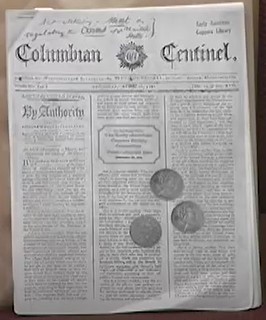
Speaker(s): Michael Gebhardt.
Great background on an important specialty club's coin sales. -Editor
To watch the complete video, see:
https://nnp.wustl.edu/library/book/560162
ARTS OF MONEY SPONSORSHIP
Donations are being sought for a great project focusing on the intersection of art and numismatics. Please consider helping out. -Editor
The Arts of Money, a historic collaboration between the Pennsylvania Association of Numismatists (PAN) and the National Arts Club (NAC) in New York, will showcase the intersection between Numismatics and the Arts. PAN President and President of the American Numismatic Association (ANA), Tom Uram, is spearheading this effort. Uram recognizes that "this program explains how art features in our historical and current coinage and represents an unprecedented opportunity to bridge the arts and numismatic communities."
The series begins with a lecture and exhibition of the work of Augustus St. Gaudens to be held on October 30, 2023 in New York. The inaugural program is a presentation on the life and work of St. Gaudens by nationally ranked author Mike Moran, who is completing his second book on this iconic artist. Longterm member of the National Arts Club, Carlos Kearns, also a member of the PAN and the ANA, is curating this exhibition and lecture. The exhibition will include some of St.Gaudens outstanding medallic art, courtesy of the American Numismatic Society, as well as his $10 and $20 coins.
The US coinage of the early twentieth century has been widely acclaimed as the most beautiful ever produced in the US. These extraordinary sculptors included Augustus St. Gaudens, Victor David Brenner, Adolfe Weinman, James Earle Fraser, Laura Fraser, and Anthony de Francisci. All of them were either members or honorees of the NAC in New York.
2023 marks the 125th anniversary of the NAC receiving their charter from the US Congress, just a few years after the ANA received their charter. "As St. Gaudens was a founding member, the NAC is to honoring him in this anniversary year," shared Uram.
The NAC Program is being launched in New York this year with the intention of touring other cities throughout the US in the future. The series welcomes Heritage Auctions as Founder Sponsor, and invites a limited number of companies and individuals to underwrite the organization and curating of the first of a series honoring these extraordinary artists.
Three levels of sponsorship are available:
Gold - $10,000
Silver - $5,000
Bronze - $500
Incoming PAN Chair, Pat McBride is coordinating sponsorships. For more information, McBride can be reached at PANCOINS@GMAIL.COM.
Sponsorships are tax-deductible contributions, which should be sent to the PAN Foundation at: 75 East Maiden St., Suite 208 Washington, Pa. 15301. "Thank you for your interest in this historic opportunity," said Uram, "please join us!"
For more information on PAN, see:
https://pancoins.org/
For more information on NAC, see:
https://www.nationalartsclub.org/
NOTES FROM E-SYLUM READERS: SEPTEMBER 10, 2023
On The E-Sylum's 25th Anniversary
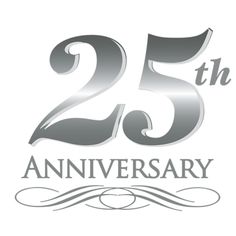 Rusty & Marie Goe of Reno, Nevada write:
Rusty & Marie Goe of Reno, Nevada write:
"We wish you continued success in creating and publishing The E-Sylum."
Bob Leuver writes:
"Congratulations on achieving #25. Celebratory for you, but, truthfully, a bucket of appreciation for your publication and the weekly (25/7) effort you put into the publication. I am probably just one of thousands who look forward to Monday morning to read The E-Sylum. Virtually every article, letter, or rumination is of interest. News for the initiated! Again, Wayne, my appreciation!"
Eric Hodge writes:
"May I congratulate you on a truly memorable first 25 years. You should, quite rightly, be very proud of your achievements on The E-Sylum, with, of course, your team."
Barry Tatum of Texican Rare Coin writes:
"Thanks for your dedication to our passion. I'm in my 41st year of business and can't stop. It's too much fun."
My thoughts as well. Despite the time and work involved, it's always fun to put The E-Sylum together each week, and knowing it's appreciated keeps me going. -Editor
To read the earlier E-Sylum article, see:
THE E-SYLUM'S SILVER ANNIVERSARY
(https://www.coinbooks.org/v26/esylum_v26n36a02.html)
On the Homren Library Video
Martin Kaplan writes:
"The highlight of my weekend was watching the video of you in your library!"
It was a fun day, and the video turned out great. -Editor
Eric Hodge writes:
"I also thoroughly enjoyed your video on your library."
Pablo Hoffman writes:
"I'm hugely impressed after watching the video of you in your personal Promised Land,
your extraordinary numismatic library. I enjoyed seeing your fabulous library and your equally fabulous narration of its organization and high point items. I felt mesmerized by the magnitude and elegance of your accomplishment. Thanks to you, and to Kellen Hoard, Jonas Denenberg, and Lianna Spurrier, for creating and sharing the wonderful world of the Homren Library."
Pablo reported that the video froze multiple times during his viewing, greatly marring the experience. While it worked well on my own first viewing, I had a similar problem viewing it again later while working on The E-Sylum. -Editor
I checked with Len Augaburger of the Newman Numismatic Portal, and he has this pro tip:
"The video is already compressed 10x on Internet Archive. Sometimes IA can serve it in real-time (it's working fine now), sometimes not.
Best option is to download the video, then play it:
On
https://archive.org/details/homrenlibrary2023, hover over MPEG4,
then left-click to download."
Pablo adds:
"I completely relate to the collector's passion that moves you, which I share through my own numismatic journey, focused almost exclusively on the Nuevo Mundo specialty, world paper money. Of course the Nuevo Mundo core reference collection is accompanied by its research library. For those E-Sylum readers who also share this particular interest, it's appropriate to mention here my two most recent bibliographic acquisitions, each an authoritative and highly recommended encyclopedic tome, both masterpieces in their respective specialties:
- Billetes de Nicaragua 1937 – 1979, by Francisco Orozco and Alan K. Luedeking (2022) ISBN -13: 978-1-7375296-0-6
- Las Cedulas Municipales de Guatemala, by Carlos M. Paiz and Carlos Jara (2022) ISBN 978-99939-0-619-3"
Stay tuned for more information on the new books. -Editor
To read the earlier E-Sylum article, see:
NNP ADDS WAYNE HOMREN LIBRARY VIDEO
(https://www.coinbooks.org/v26/esylum_v26n36a08.html)
Frozen Dates
Regarding the vocabulary terms immobilized/obsessive dates,
Martin Purdy of Upper Hutt, New Zealand writes:
"I don't think I've ever come across either of these terms in 50 years of collecting - "frozen dates" is the term I'm used to in the stated context."
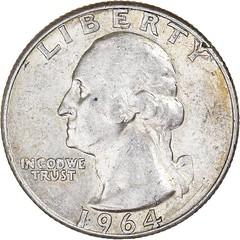 What do readers think? This is a relatively rare phenomenon in numismatics. I've heard the "frozen" term, as in "The date freeze legislated by Congress in 1964 meant that all mints could go on striking cents dated 1964 indefinitely" but have also seen this described without a defined word, as in "Silver pieces dated 1964 were struck right into the early months of 1966".
What do readers think? This is a relatively rare phenomenon in numismatics. I've heard the "frozen" term, as in "The date freeze legislated by Congress in 1964 meant that all mints could go on striking cents dated 1964 indefinitely" but have also seen this described without a defined word, as in "Silver pieces dated 1964 were struck right into the early months of 1966".
There are a few references to "immobilized date" found on the Newman Numismatic Portal, just one "obsessive date" and nearly a hundred references of "frozen date." So all terms have indeed been used, none frequently, but "frozen" does seem to have an edge. Does "frozen date" have an entry in other numismatic dictionaries or encyclopedias? -Editor
Martin adds:
"I thought I'd find published definitions for "frozen date" immediately in various numismatic dictionaries or earlier editions of Britain's COIN Yearbook - but no joy anywhere so far!"
To read the earlier E-Sylum article, see:
VOCABULARY TERM: OBSESSIVE DATE
(https://www.coinbooks.org/v26/esylum_v26n36a15.html)
More on Tassie Coin Impressions
"I receive E-Sylum every week and enjoy dipping into to it for those articles I have an interest in. It was nice to read your recent article on Tassie coin impressions and I would like to add some additional information at this late stage which may be of interest.
"At the International Coin Fair in Dublin a few years ago I purchased two sets of these coin impressions. They were packed in two very modest flat cardboxes. The twelve impressions are in what I assume is red wax and are sharp, Greek and Roman. The base of each impression is a card frame with a gold layer.
"I was informed by the dealer that they came from an auction in Scotland. Some years ago I visited Glasgow with the Numismatic Society of Ireland to view the Hunterian Collection so I was aware of Dr. Hunter's extraordinary contribution to Numismatics. I was surprised and delighted to discover on a number of the impressions I bought, handwritten in neat black ink, around the frame, the name Dr. Hunter. I sometimes wonder if the coins used to create the impressions were in fact selected from Dr. Hunter's own vast collection."
Thank you - great photo. -Editor
To read earlier E-Sylum articles, see:
DASSIER'S KINGS AND QUEENS OF ENGLAND MEDALS
(https://www.coinbooks.org/v23/esylum_v23n42a14.html)
TASSIE COIN IMPRESSIONS
(https://www.coinbooks.org/v26/esylum_v26n30a16.html)
NOTES FROM E-SYLUM READERS: JULY 30, 2023 :
More on Tassie Coin Impressions
(https://www.coinbooks.org/v26/esylum_v26n31a13.html)
NOTES FROM E-SYLUM READERS: AUGUST 6, 2023 :
More on Tassie Coin Impressions
(https://www.coinbooks.org/v26/club_nbs_esylum_v26n32.html)
On Consigning Books
Rusty & Marie Goe write:
"Your written and visual tour of the process of consigning a portion of your numismatic library to K-F provides interesting content. Thanks for sharing it. Your remaining library in your office still looks jammed-full!"
It is. My storage unit is gone now though, and there's less in our garage. If I get better organized maybe some more will come inside. -Editor
To read the earlier E-Sylum article, see:
WAYNE'S NUMISMATIC DIARY: MAY 4, 2023
(https://www.coinbooks.org/v26/esylum_v26n36a25.html)
On Shrinking (and Stretching) Money
Jim Haas writes:
 "I read the newspaper article, watched the video and will check out the other links. Too bad there is no way to stretch a dollar, maybe into a ten or a twenty."
"I read the newspaper article, watched the video and will check out the other links. Too bad there is no way to stretch a dollar, maybe into a ten or a twenty."
Well, crooks do find ways to erase denominations and raise banknotes to higher values. It sure would be nice to find a way to breed a new litter of money pups and kittens, maybe with a new shake-and-bake recipe. -Editor
To read the earlier E-Sylum article, see:
ON SHRINKING MONEY
(https://www.coinbooks.org/v26/esylum_v26n36a10.html)
DANSCO ALBUM COLLECTION UPDATE
Justin Hinh writes:
"I thought I would share an update on my Dansco preservation project! I was privileged enough to attain a large part of David Lange's personal collection of Dansco albums. I almost have one of every Dansco album ever made [except for some one-off custom albums and the #7240 Cuba Typeset Album!] I now have around 500+ Dansco Albums and Folders. I am slowly making my way through to catalog each piece and researching their history. As I learn and catalog more, I will make sure to keep the E-Sylum readers in the loop!"
Congratulations on a great acquisition! -Editor
Justin adds:
"I have a question regarding book preservation. We often have dozens if not hundreds of books in our collections. But what is the optimal environment for long-term preservation of our books? Specifically for coin albums like Dansco and Whitman?
"I have hundreds of Dansco albums and folders with many filled out. It's unclear what humidity is optimal to avoid books drying out. Or what temperature to maintain? If lighting should be considered? Or something else? My goal is to keep my albums safe and to avoid my coins toning."
We've covered this topic a few times, but it's complex with many aspects to cover. Because of the varying sub-topics, it's hard to locate earlier articles in our E-Sylum archive. I do recall Joel Orosz discussing some aspects of this, and a video tour of his library is linked below.
What advice do readers have for Justin? -Editor
I reached out to Joel Orosz, who starts us off with:
"Traditionally, the recommendations for book storage has been 65 degrees Fahrenheit, with a relative humidity of 50%.
"Ultraviolet light is the culprit in fading books, so natural sunlight, fluorescent and compact lights should be avoided. Incandescent lighting was always recommended, but incandescent lights are now being phased out. I believe that LED lights are UV-free, but I'll defer to experts on this point."
To read an earlier E-Sylum article, see:
BOOK PRESERVATION
(https://www.coinbooks.org/esylum_v03n26a04.html)
THE JOEL OROSZ NUMISMATIC LIBRARY TOUR
(https://www.coinbooks.org/v25/esylum_v25n34a06.html)
NOTES FROM E-SYLUM READERS: FEBRUARY 5, 2023 :
Dansco Albums Wanted
(https://www.coinbooks.org/v26/esylum_v26n06a12.html)
GRADING SERVICE LAUNCHED: COLLECTIBLE MARKET QUALIFIED
This press release from Stack's Bowers Galleries announces a new player in the fourth-party grading business. -Editor
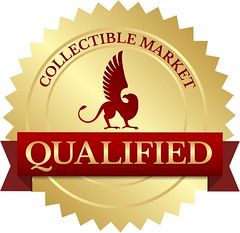 Stack's Bowers Galleries, the renowned numismatic auction house, and David Hall, the
esteemed founder of Professional Coin Grading Service (PCGS), have partnered to introduce Collectible Market
Qualified (CMQ), a new service offering that identifies the highest quality graded coins in the market.
Stack's Bowers Galleries, the renowned numismatic auction house, and David Hall, the
esteemed founder of Professional Coin Grading Service (PCGS), have partnered to introduce Collectible Market
Qualified (CMQ), a new service offering that identifies the highest quality graded coins in the market.
Utilizing CMQ's services, collectors, dealers, and investors can submit qualifying coins to be evaluated by David
Hall and Stack's Bowers Galleries' CEO Greg Roberts, two of the most accomplished numismatists of all-time. Hall
and Roberts will assess each coin for its quality, eye appeal and grade. Coins that Hall and Roberts unanimously
agree meet CMQ's rigorous standards will be recognized as qualified
and granted a tamper-resistant hologram
sticker, symbolizing a mark of approval.
CMQ stickered coins are designed to instill confidence in a coin's quality and facilitate sight unseen
trading.
Stack's Bowers Galleries' and David Hall Rare Coins' trading departments, who collectively buy and sell more than
$500 million in rare coins annually, will be active market makers in all CMQ stickered coins, providing added
demand and liquidity. Collectors, dealers, and investors in rare coins can have a new level of confidence when
buying or selling CMQ stickered coins because they have unanimously met or exceeded Hall's and Robert's
rigorous standards.
Collectors and dealers can rest assured that no marginally graded or negative eye appeal coins will ever exhibit a
CMQ sticker, providing a new level of confidence when buying or selling CMQ qualified coins,
commented Hall.
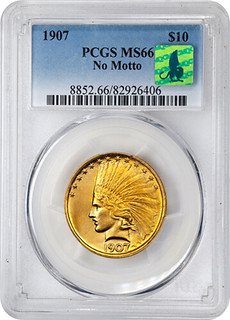 CMQ will offer two levels of stickers – CMQ and CMQ-X. Collectible Market Qualified Exceptional (CMQ-X)
stickers will be assigned to a small percentage of coins that,
CMQ will offer two levels of stickers – CMQ and CMQ-X. Collectible Market Qualified Exceptional (CMQ-X)
stickers will be assigned to a small percentage of coins that, make you shake your head in wonderment,
added
Hall. Each coin submitted for CMQ review will be photographed by Stack's Bowers Galleries' award-winning
photography department and these images will be available in submitters' online accounts.
CMQ will begin accepting coin submissions on September 5, 2023. For information on what coins are eligible, how to submit coins, pricing, and other inquiries, please visit www.StacksBowers.com/CMQ.
Additionally, Stack's Bowers Galleries will be making its proprietary and patented Coins In Motion (CIM) high resolution collectible animation technology available to all collectors and dealers in the fourth quarter of 2023. Utilizing the same submission process as CMQ, collectors and dealers will receive ultra-high resolution 4K MP4 video animations of their submitted coins, ideally formatted for sharing on social media, including in collection management systems or to facilitate buying and selling.
About David Hall
David Hall, founder of Professional Coin Grading Service (PCGS), is widely recognized as one of the greatest and
most influential numismatists of all time. Under his leadership, PCGS revolutionized the coin collecting hobby by
introducing an objective and standardized grading system, which provided collectors and investors with a trusted
and consistent method for assessing the condition and authenticity of coins. Hall's visionary approach played a
pivotal role in establishing PCGS as the industry standard for coin grading and authentication.
About Greg Roberts
Greg Roberts is a highly accomplished figure in the numismatic world and one of a small handful recognized in the
Coin Dealer Hall of Fame by PCGS. Throughout his career, Roberts has held several notable positions, including his
current role as CEO of Stack's Bowers Galleries and A-Mark Precious Metals. Under his leadership, Stack's Bowers
Galleries has solidified its position as one of the most prestigious and trusted auction houses in the world,
specializing in rare coins, currency, and collectibles. With a career spanning several decades, Roberts has traded
well in excess of $1 billion of rare coins, handled every coin in the Guide Book of U.S. Coins and built some of the
greatest collections ever assembled.
To read the complete article, see:
Stack's Bowers Galleries Partners with Professional Coin Grading Service (PCGS) Founder David Hall to Launch Collectible Market Qualified (CMQ) Offering
(https://cmq.stacksbowers.com/news-article-20230905.php)
The coin industry keeps getting more interesting. I'm at a loss for the right analogy. But with so many changes in quick succession, there's definitely something big going on. Technology change, generational change, market change, deep-pocketed collectors and financiers coming on the scene, old businesses reshuffling their ranks, new businesses starting up... Who knows where the industry will be in five or ten years? Lots of people have ideas though, and they're trying new things. Everyone is jockeying for position in the next iteration of the market. Not everyone will survive. New power players may emerge. Strap yourself in - it could be a bumpy ride. -Editor
To read the earlier E-Sylum articles, see:
HARVEY AND LAWRENCE STACK REJOIN STACKS-BOWERS
(https://www.coinbooks.org/esylum_v14n22a10.html)
COLLECTORS UNIVERSE TERMINATES DAVID HALL
(https://www.coinbooks.org/v21/esylum_v21n38a16.html)
WHEN INSTITUTIONS FAIL: PART II
(https://www.coinbooks.org/v22/esylum_v22n31a22.html)
FEIGENBAUM: COINS ECLIPSED BY SPORTS CARDS
(https://www.coinbooks.org/v23/esylum_v23n49a12.html)
TYRANT COLLECTION OWNER DAN O'DOWD
(https://www.coinbooks.org/v25/esylum_v25n12a18.html)
THE STRATOSPHERE OF NUMISMATICS
(https://www.coinbooks.org/v25/esylum_v25n35a20.html)
CAC BECOMES A THIRD-PARTY GRADING COMPANY
(https://www.coinbooks.org/v25/esylum_v25n42a20.html)
HARRY LAIBSTAIN ON HOBBY'S PAST AND FUTURE
(https://www.coinbooks.org/v25/esylum_v25n51a16.html)
MYCOLLECT SOCIAL NETWORK LAUNCHED
(https://www.coinbooks.org/v26/esylum_v26n29a14.html)
THE COIN MARKET'S PULSE IN PITTSBURGH
(https://www.coinbooks.org/v26/esylum_v26n35a08.html)
VOCABULARY TERM: OBSOLETE
Here's another entry from Dick Johnson's Encyclopedia of Coin and Medal Terminology. -Editor
Obsolete. Not current. Obsolete coins are a type no longer issued. Most obsolete coins retain face value and may remain in circulation but a few such coins in the past have been demonetized – rendered no longer acceptable in commerce at any but scrap value. Obsolete medals, particularly award medals are those no longer awarded. The cessation of such an item is usually a financial reason – increased costs – or lack of interest in the program, the sponsoring organization going out of existence, or the medal program has served its original purpose and is no longer viable. The existing medals, as the stock of unawarded pieces, often come into collectors' hands; these are collected along with the awarded medals of the past bearing recipient's names or other evidence of once being bestowed
Among orders and decorations, obsolete means an item no longer awarded but some recipients may still be alive and entitled to wear these. As such, in their medal rank obsolete decorations take precedence over current decorations and are given a more honored position when worn or exhibited together. Once all living recipients have died, such obsolete orders and decorations are termed extinct.
To read the complete entry on the Newman Numismatic Portal, see:
Obsolete
(https://nnp.wustl.edu/library/dictionarydetail/516414)
RAYMOND FRANCIS HANISCO (1950-2014)
E-Sylum Feature Writer and American Numismatic Biographies author Pete Smith submitted this article on telemarketer Ray Hanisco. -Editor
I have mentioned that I am working on a long-term project to write about numismatic criminals and victims. I suggested to Wayne that I use my research to occasionally run one of these stories in The E-Sylum.
Veteran
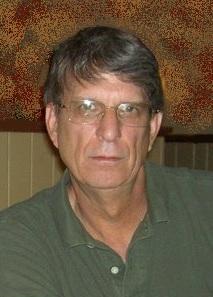 Ray Hanisco was born in Philadelphia on September 19. 1950. His parents were Raymond L.
Hanisco and Mary Kuchers Hanisco. In 1977 he received a B.A. in anthropology from
Pennsylvania State University. He married Paula Hayko and had three sons.
Ray Hanisco was born in Philadelphia on September 19. 1950. His parents were Raymond L.
Hanisco and Mary Kuchers Hanisco. In 1977 he received a B.A. in anthropology from
Pennsylvania State University. He married Paula Hayko and had three sons.
He served with the U. S. Army in Vietnam during 1971-73. He wrote a number of articles on veterans' issues and was identified as veterans' editor for the bellaonline.com website. A collection of his articles was compiled as A Veterans' Anthology which was published on December 22, 2013, about three weeks before his death.
He died at the VA Medical Center in Minneapolis on January 11, 2014. His cremains are in a burial vault at Fort Snelling National Cemetery.
An item in the October 9, 2005, issue of The E-Sylum identified Hanisco as the editor of the Belladona Coin News. That is the only time that periodical is mentioned in the Newman Numismatic Portal.
Hanisco has a LinkedIn listing. He indicates that he is Veterans Editor
for
Bellaonline.com,
that his experience is Jul 2013 – Present, and thus has been at this for 10 years and three months.
There is a problem with this information as he has been dead for 9 years and 4 months.
Becoming an editor requires an application. There is no fee to join and no compensation. It is a forum where aspiring writers can get articles published. Perhaps it is somewhat like getting an article published in The E-Sylum.
Hanisco wrote a number articles on coin collecting for the hobbies section of the website. Some have been recognized as important and cited in other references. Here are a few titles:
Getting Started in Coin Collecting
There's Just no Humor in Coin Collecting
The Saint Patrick Coppers
The United States Four Dollar Gold Stella
The Silver Coinage of the Kingdom of Hawaii
In general, I found the articles to be well written and would have required research and knowledge of the subject. This was, in my opinion, unique for a telemarketer.
His obituary stated that he maintained his career in professional numismatics in Minnesota.
In 2001 he advertised for telesales professionals under the name of Westminster Group.
In 2007 he was listed with Independent Coin Services of Bloomington, Minnesota.
Ray joined the ANA as Member 3122738 in November 1989. The December 2007 issue of The Numismatist announced that he was expelled for failure to pay $408.92 for materials purchased.
Hanisco was a salesman for Twin Cities Gold and Silver Exchange (TCGS) in Plymouth. At that time it was a telemarketing firm owned by Jeffery Wolfebauer. Hanisco left in 2009 to form Guardian Gold and Silver Exchange with partner Schaun Waste as vice president and chief operating officer.
To make a good start in the new company, Waste took the TCGS customer list with him. Guardian also recruited salesmen from TCGS to come work for them. This has been a common problem in the Minnesota telemarketing industry. In 2010 TCGS sued and Guardian agreed to pay $35,000 and stop using the list and stop recruiting from TCGS staff.
In 2012, Minnesota Attorney General Lori Swanson sued Guardian, Hanisco and Waste for bilking customers, mostly elderly, on sales of coins and bullion. Guardian filed for bankruptcy in 2012 with debts of $1.7 million.
The case was prosecuted while Swanson was working to get bullion trading regulations passed through the Minnesota legislature. The first version of the law was passed in 2013 and took effect on July 1, 2014.
Schaun Waste took most of the heat. In 2015 he was ordered to pay $2 million in restitution and was banned from the industry for life. By the way, his current LinkedIn page states that he is vice president of Guardian Gold and Silver Exchange, nearly eight years since a court order banned him from the industry for life.
Hanisco avoided prosecution by dying in 2014.
Thanks, Pete. -Editor
To read the earlier E-Sylum article, see:
NEW NUMISMATIC WEB SITE BUZZ?
(https://coinbooks.org/esylum_v08n43a15.html)
BILL GROOM INTERVIEW, PART TWO
Greg Bennick's latest interview for the Newman Numismatic Portal is with counterstamp researcher Bill Groom. Here's the second of four parts, where Bill talks about how he got involved in numismatics, and how counterstamps are produced. -Editor
Greg Bennick Well, how did you happen to start collecting coins and exonomia?
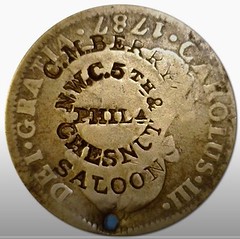 Bill Groom
My dad was a Teamster. And one day he came home. He was a moving man. And one
day he came home and he had found a couple of coins in a trunk that someone had
abandoned. And he gave them to me. One of them was a 1795 silver dollar. It was very
worn, but it was identifiable. And the other one was a 1918 half dollar, which I later found
out was a lead counterfeit. I still have that one. The 1795 dollar, it got me curious and I
started researching coins, and my mom had bought me a sort of encyclopedia, which was
a big expense at the time. Back in the mid 50's. $300. That set of encyclopedia. But I
used to pout through it. And whether it was homework or just I saw something on TV and
wanted to look it up and I guess that's what got me in the habit of researching coins and
that. But with those coins I ended up trading the 1795 dollar to a minister who was a coin
collector and he gave me a whole bunch of coins for that. Now that 1795 dollar at the time
was worth about $40 we figured, back in the mid 50's in that low grade, and that started
me on coin collecting. Then I got a newspaper route when I used to get old coins and I'd
look for them. I told my customers I was looking for old coins - some of them would give
me old coins that they had in their drawers at home. And eventually I got into a coin club
where I lived in western New York, it was the Jamestown Coin Club, and started to meet
dealers. I should have mentioned, my first Civil War token I bought was when I was a
teenager at a mall on Long Island. It was on a Gimbel's store in the mall and they had a
coin counter and I saw a token there with Lincoln on it, and it was dated 1864. And I
thought,
Bill Groom
My dad was a Teamster. And one day he came home. He was a moving man. And one
day he came home and he had found a couple of coins in a trunk that someone had
abandoned. And he gave them to me. One of them was a 1795 silver dollar. It was very
worn, but it was identifiable. And the other one was a 1918 half dollar, which I later found
out was a lead counterfeit. I still have that one. The 1795 dollar, it got me curious and I
started researching coins, and my mom had bought me a sort of encyclopedia, which was
a big expense at the time. Back in the mid 50's. $300. That set of encyclopedia. But I
used to pout through it. And whether it was homework or just I saw something on TV and
wanted to look it up and I guess that's what got me in the habit of researching coins and
that. But with those coins I ended up trading the 1795 dollar to a minister who was a coin
collector and he gave me a whole bunch of coins for that. Now that 1795 dollar at the time
was worth about $40 we figured, back in the mid 50's in that low grade, and that started
me on coin collecting. Then I got a newspaper route when I used to get old coins and I'd
look for them. I told my customers I was looking for old coins - some of them would give
me old coins that they had in their drawers at home. And eventually I got into a coin club
where I lived in western New York, it was the Jamestown Coin Club, and started to meet
dealers. I should have mentioned, my first Civil War token I bought was when I was a
teenager at a mall on Long Island. It was on a Gimbel's store in the mall and they had a
coin counter and I saw a token there with Lincoln on it, and it was dated 1864. And I
thought, Wow, that's curious.
So I asked to see it. And the reverse was okay. It was
$12.50. And at the time, minimum wage, which I was earning, was a buck and a quarter.
So that was 10 hours of work for me. But I had to have that piece. And the reason I wanted
it was, I thought it was amazing that it was a coin that Lincoln was still alive in 64. I knew
that as a teenager and he got to see his own image on a cent - a circulating civil war
token. So I just thought that was so cool. I had to have it.
Greg Bennick And it's very cool. It's very cool. Now did your collecting interests evolve over the past 60 plus years? Where did you go after that time?
Bill Groom
Well, I went to college, spent five years in school, and I taught school after that - middle
school - and I got into civil service. I became a probation officer for 25 years in New York.
And then I retired in 2001. So about 20 years ago I retired. But after I graduated
college and finally got out where I was making a little money, I got back interested in the
coins and started going to the shows. And going to auctions and participating in auctions.
And so it just evolved from there. And I had gotten into collecting Lincoln cents quarters,
and Buffalo nickels. I had to put together a full horn set of Buffalo nickels, that was a fun
thing to do. So I got in matching condition coins and I created sets that had coins with the
same condition. And I got into type coin collecting, which I loved and had a beautiful
typeset, but the tokens always called out to me. And then I got a counter stamp, my first
one with a counter stamp I bought for five bucks at a local show and it was an Erie store
card. At the time, I didn't realize it was cataloged as a civil war token and I didn't have the
big store card book I think came out in 75, but this was about 77. I didn't have the book at
that time and that was stamped with a merchant. It had his name, his address, selling dry
goods, and it was on an 1859 Indian cent. That was my first counterstamp. And I thought,
That's neat.
And I started wondering if there were any more. And I started looking and I
started buying more gradually. And then as I started going to some of the bigger shows in
the eighties, when I was a little more affluent and I can recall being able to buy groups
counterstamp coins. Richard Rossa. Some people I know him, Rossa and Tannenbaum were
big into tokens and Richard Rossa at one show, I think it was Pittsburgh ANA in about 1988,
maybe sold me a bag - 30, 40 pieces for a little over ten bucks apiece. And when I got to
researching those counterstamps in that bag, I mean, I pulled out three gunsmiths, a
silversmith. It was just an incredible group of pieces. And that one really got me intrigued.
In fact, I spent a week in Philadelphia at the library. This was before they had the
computers there. I spent a week at the Philadelphia Library researching because
Philadelphia was really a hub of counterstamps. I went to Chicago for a week and spent a
weekend in the library there. I didn't do any sightseeing. I just sat the library all the time
looking up these counterstamps. It became something of an obsession, I guess you'd say.
Greg Bennick Now, you mentioned an Erie store card. For those who know what that is, for those who don't, could you describe real quick what an Erie store card is?
Bill Groom Well, the Erie store card - there are two types of civil war tokens, two major varieties, ones is patriotic ones that have don't have any merchant advertising on them. Store cards are tokens produced during the Civil War that have advertising, whether it's a goods or service on them. And there are 10,000 different varieties of civil war tokens and the Erie store card was issued. It's the only one from Erie, Pennsylvania, and that's not far from where I lived, about 50 miles from where I lived at the time. So I was able to do some research on it. And I think I recall writing an article for the Civil War Token Society called The Erie Store Card and so on. If someone looks in your early journals they will find that article.
Greg Bennick What sort of coin and exonumia articles have you written? You mentioned your research. Where have those articles been published?
Bill Groom For about the past six years I've been writing a series of articles. I call it Punch Lines. For counter stamps, strictly about counter stamps. And they've been published in the journal of the National Token Collectors Association, and the journal is called Talkin' Tokens. I believe they're even offering a free subscription, temporary subscription. So you can go in and research the journals. And I think it's a very modest cost online. I think it's $18 a year. And I've also written with the Civil War Token Society a number of articles starting about 40 years ago now, I started writing articles for them on Civil War tokens and actually more recently on some counterstamps and a few of the counterstamps that I wrote about were actually produced during the Civil War period.
Greg Bennick Counter stamps were produced punched letter by letter, meaning the name of a merchant. I just thought to ask this just now - or were they done with some sort of punch that that struck all of the merchants name at once? I mean, I've seen examples of both, but what was more common?
Bill Groom Okay. That's an excellent distinction to make. With individual letter punches you have to really be careful about those because anyone with a set of punches can produce a counterstamp coin. This is one of the reasons pictures are so important of known counterstamps. There have been some fabrications of counterstamps and individual ones can easily be fabricated. There's one of the popular counterstamps which is called Vote the Land Free, and that's a prepared counterstamp. Now that counterstamp still exists in the Kansas State Historical Society. But there are some people who have created their own Vote the Land Free with individual letter punches. And they are not contemporary to the time, which was the 1840s. Now generally collectors should look for stamps that were created with one punch - it might have the whole name. All the letters are evenly aligned, they might be in a box or serrated box or a shape - some sort of almost like a little billboard to use Greg's term. Counterstamps that have initials, names, towns, occupations stamped not with individual misaligned letters but with a prepared punch. Because for someone nowadays to get a prepared punch done it could be costly and they are less likely to be fabricated.
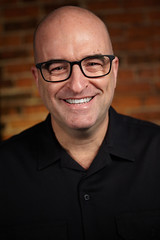 About the Interviewer
About the Interviewer
Greg Bennick (www.gregbennick.com) is a keynote speaker and long time coin collector with a focus on major mint error coins. Have ideas for other interviewees? Contact him anytime on the web or via instagram @minterrors.
To watch the complete video, see:
Bill Groom on Counterstamps
(https://archive.org/details/billgroominterview)
To read the complete transcript, see:
Bill Groom Interview (Transcript)
(https://nnp.wustl.edu/library/book/630877)
To read the earlier E-Sylum article, see:
VIDEO: BILL GROOM ON COUNTERSTAMPS
(https://www.coinbooks.org/v26/esylum_v26n35a05.html)
BILL GROOM INTERVIEW, PART ONE
(https://www.coinbooks.org/v26/esylum_v26n36a17.html)
THE BOOK BAZARRE
NUMISMATIC CORRESPONDENCE: STUFF OF HISTORY
Another lot from my library in the upcoming Kolbe & Fanning sale is a collection of numismatic correspondence. Only some if it is my own, and a wide array of past and present numismatic personalities are included, such as Large Cent collectors and fellow Pittsburgh numismatists George Clapp and James O. Sloss to dealers Fred Baldwin, Aubree Bebee, and John J. Ford, Jr., and U.S. Mint Directors Patterson and Linderman. As a numismatic bibliophile some of my favorites involve authors such as John Hickcox, Neil Carothers, M.H. Bolender and Walter Breen. -Editor
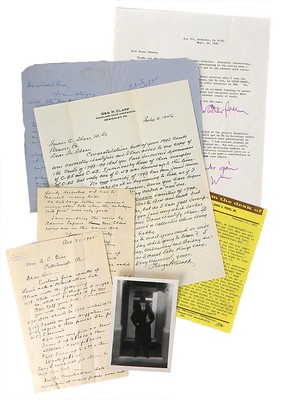 Homren, Wayne [compiler]. BINDER 52: NUMISMATIC CORRESPONDENCE. Includes the following:
Homren, Wayne [compiler]. BINDER 52: NUMISMATIC CORRESPONDENCE. Includes the following:
1) correspondence between Wayne Homren and John W. Adams, Nelson P. Aspen, Del Bland, Q. David Bowers, Walter Breen, Ken Bressett, John J. Ford, Lynn Glaser, Denis Loring, Arlie Slabaugh and others;
Signed with his signature purple ink, Breen's letters answered questions I had for him about Civil War numismatics and a topic I hadn't asked him about - bars in New York City, telling me that Civil War token issuer Pfaff's was a hangout for gay men. -Editor
2) three letters from Albert (Fred) Baldwin to James Sloss (1946–1955), accompanied by a photograph of Baldwin;
4) Aubrey Bebee letter (1984) to Orville Grady;
5) typewritten sheet titled Notes on Some of the Varieties of the Cents of 1796 signed by George Clapp;
6) letter dated December 14, 1945 from James Sloss to George Clapp;
7) letter from George Clapp to James O. Sloss (July 9, 1946);
8) 1983 letter from John J. Ford to Bob Kincaid;
9) letter from Albert Frey to A.C. Gies (October 21, 1902);
10) two letters from Howard Gibbs to James Curto (1947);
In the 1980s Bob Kincaid recruited me to help with research on US. Encased Postage Stamps which was later incorporated into Fred Reed's book on the topic. Gies and Gibbs were fellow Pittsburgh numismatists who'd passed from the scene before my time. -Editor
11) two letters from Charles Springer Hall to Walter Nichols (November 7, 1935 & undated);
12) letter from Mark Hofmann to Armand Champa, ex Armand Champa library (November 1, 1979);
This one is priceless - Mark Hofmann is the murderer behind the Mormon bombings, a master forger of documents, coins and paper money. See the earlier article, linked below, for more on Hofmann. -Editor
13) Western Union telegram from Glenn Mooney to the Hobby Shop with handwritten response signed by W.E. Steffee (April 30, 1956);
14) letters between the Hobby Shop and Glenn Mooney (1956);
15) 1934 letters to Walter Nichols from Albert Weitzel;
16) letter to Charles Ruby from Julius Reiver (May 30, 1970);
17) letter from Gilroy Roberts to Theodore Riviere (1983);
18) letter to Mel Came from James F. Ruddy (April 19, 1972);
19) letter from Norman Shultz (April 9, 1930);
20) letter to Norman Stack from Stephen T. Riley of the Massachusetts Historical Society (March 6, 1973);
21) letter from Mint Director R.M. Patterson to Hon. Charles Brown requesting copies of the 1848 Mint Report (January 25, 1849);
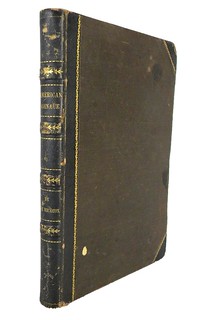 22) letter from John Hickox (January 25, 1858) to N.[?]A. Moore;
22) letter from John Hickox (January 25, 1858) to N.[?]A. Moore;
This is among my favorite letters. I was delighted to discover it in the stock of a dealer at a paper money show in Memphis, TN. See lot 318 for my copy of Hickox's 1858 An Historical Account of American Coinage, the first substantial work ever written on American coins. Only 200 copies were printed, and to my knowledge letters signed by Hickox are even more rare. -Editor
23) letter from F.E. Spinner to J.J. Roberts (August 15, 1863);
24) letter from Mint Director H.R. Linderman to J.R. Butler (January 12, 1878);
25) two letters between M.H. Bolender and Ed. C. Fritch (June 29, 1928 and June 12, 1928);
26) Treasury Department document signed by Deputy Comptroller Samuel Howard authorizing the Doylestown National Bank to begin operations (November 16, 1864), with intact seal;
27) letter to George S. King from Lyman Gage (1903) accompanied by check endorsed by Gage (July 23, 1869) and other parties;
28) Treasury Department letter dated November 1, 1867 and addressed to Hon. Edgar Cowan;
29) Treasury Dept. receipt August 7, 1907;
30) hand-written letter from William A. Ashbrook on U.S. House of Representatives letterhead dated March 13, 1919;
31) photocopy of typewritten letter from R.H. Williamson to Neil Carothers at Lehigh University about a young Walter Breen dated May 2, 1951;
32) photocopy of typewritten letter from R.H. Williamson to Walter Breen dated May 8, 1965 (refers to previous letter);
33) three typewritten letters to Wayne Homren from the ANA about ANA activities, all from 1996;
34) two typewritten letters from Joe Boling to Wayne Homren about 1996 ANA activities;
35) typewritten letter from Roland P. Burnham to Wayne Homren dated October 25, 1992;
36) typewritten letter from John Kraljevich to Wayne Homren dated February 21, 1993;
36) typewritten letter from Wayne Homren to Denis Loring dated March 19, 1995;
37) photocopy of a handwritten letter from Glenn Mooney to Mr. Johnson dated November 19, 1992;
38) list of ANS materials on Jacob Perkins sent from Eric P. Newman;
39) handwritten letter from Russ Sears to Wayne Homren dated January 7, 1993;
40) typewritten letter from Thomas W. Sheehan to Wayne Homren dated November 13, 1992;
41) typewritten letter from Wayne Homren to Pete Smith dated March 2, 1993;
42) Christmas card with insert from John and Regina Adams to Wayne Homren, dated December 1, 2014;
43) typewritten letter from Richard Graham to Wayne Homren dated June 22, 2011 about the U.S. Frigate Constellation medals (one enclosed);
44) card with handwritten note from David Hirt to Wayne Homren dated March 10, 2019 about the 500 Hungarian note (2 enclosed);
45) two comics from Dick Johnson to Wayne Homren (2016 & 2017);
46) typewritten thank-you note from Andy Newman to Wayne Homren dated December 7, 2017;
47) mail from Steve Roach to Wayne Homren dated December 17 2018 with Santa-stamped elongated penny and clipped article;
48) letter from Barry Tayman to Wayne Homren (2019). Generally fine or nearly so.
A very rich binder in terms of content. The letters from Fred Baldwin, George Clapp, Albert Frey, R.M. Patterson, John Hickcox, and H.R. Linderman could all be single lots of their own, and the letter from Utah forger and murderer Mark Hofmann is certainly noteworthy. The more modern letters make one realize just how much of the history of our current hobby is lost by our reliance on email. Ex Wayne Homren Library.
Numismatic ephemera collections today are typically the result of happenstance, and mine is no exception - these are typically groupings of diverse material the collector had the opportunity to receive, purchase or otherwise rescue from an uncertain fate. Future collectors may be able to draw from earlier offerings of material to assemble more specialized collections, such as correspondence related to particular numismatic topics, institutions, collections or collectors. If I live long enough for the market in numismatic ephemera to sufficiently advance, we may well see items like these ensconced in slabs and graded and traded like sports cards and comic books. -Editor
To read the complete lot description, see:
Numismatic Correspondence
(https://bid.numislit.com/lots/view/1-7XX39E/numismatic-correspondence)
To read the earlier E-Sylum article, see:
MORE ON THE FORGERIES OF MARK HOFMANN
(https://www.coinbooks.org/v21/esylum_v21n01a11.html)
THIAN CONFEDERATE NOTE ALBUM
Another favorite acquisition for my library also came from a paper money show in Memphis, TN - my Thian Confederate Note Album. Here's the lot description from the upcoming Kolbe sale. -Editor
Thian, Raphael P. CONFEDERATE NOTE ALBUM. FOR A COMPLETE COLLECTION (WITH DESCRIPTIVE LETTER-PRESS) OF THE VARIOUS DESIGNS FOR FACE AND BACK SELECTED BY THE CONFEDERATE TREASURY AUTHORITIES FOR THE CURRENCY OF THE CONFEDERATE STATES OF AMERICA, 1861–1865. Washington, D.C.: Thian, 1876. Oblong 8vo [23.5 by 12. 5 cm], original plan card covers. 4 blank leaves; 45, (1) pages of descriptive text; 44 leaves (hand-numbered 1–88) with a decorative printed border; 4 blank leaves. Six original Confederate Treasury Notes are affixed to their relevant album pages: Thian Nos. 7, 31, 33, 72, 78 and 82 in his numbering system [see comments for descriptions]. Signs throughout that other notes used to be present. Front cover reattached; somewhat wrinkled with moderate general wear. Very good or so. Very rare, one of only a few examples we have handled in over half a century.
Raphael Prosper Thian (1830–1911) is best remembered today for compiling a series of groundbreaking publications on the paper money and finances of the Confederate States of America, all of which were published in very small numbers. This is his first such publication. The work's raison d'être is stated on the leaf following the title: "A desire to afford Collectors of Confederate Currency a tasteful repository for their Notes, and at the same time furnish them an accurate and exhaustive description of the varieties comprising a full set, has resulted in this Album, which is respectively dedicated to them."
The text describes in great detail the 88 notes comprising a set, and provides space for them to be mounted within. This is the only album we recall having handled that still includes a small number of the notes that at one point were held within. Present are: Thian Nos. 7 (the September 2, 1861 $100), 31 (September 2, 1861 $20 by B. Duncan), 33 (September 2, 1861 $20 by Hoyer & Ludwig in black), 72 (April 6, 1863 $5), 78 (June 2, 1862 $2 in black and green), and 82 (June 2, 1862 $1 in black). While most of these are rather worn, their presence is distinctly unusual.
Remarkably, given the rarity of the present version, deluxe printings are known, with the note borders printed in green (or in black but on blue stock), and bound in either full or half morocco. This testifies to Thian's tendency to print his publications in very small batches, with numerous modifications and variations. This 1876 album can rightfully be regarded as a predecessor of the famous Master Albums produced by Thian to include comprehensive collections of CSA currency. Unrecorded in Davis. Ex Wayne Homren Library.
To read the complete lot description, see:
With Several Original Notes Still Present
(https://bid.numislit.com/lots/view/1-7XX358/with-several-original-notes-still-present)
KAGIN'S TO OFFER FORD COLONIAL NOTES
Here's the press release for the September 23, 2023 Kagin's sale of colonial notes from the John J. Ford collection. -Editor
Historic Colonial-Era Money Printed by Franklin and Revere in Auction.
Kagin's Auctions of Tiburon California will be offering Significant Notes from the John J. Ford Colonial Currency Collection in their Part 2 online auction on September 23, 2023, at 4PM Pacific. The 216 lots constitute approximately 60% of the 375 notes of the entire collection which is considered one of the finest collections of Colonial Bank Notes.
Part 1 concluded on May 20, 2023, and included notes from the colonies of Connecticut, Delaware, Georgia, Maryland, Massachusetts, New Hampshire, and New Jersey. With the buyers' premium, they realized $464,721.60, including many individual record prices. Part 2 will include notes from the colonies of New York, North Carolina, Pennsylvania, Rhode Island, South Carolina, Vermont, and Virginia.
These important notes were previously in the collection of John J. Ford, a prominent New York City collector and influential dealer who passed away in 2005. Some of the notes are unique with no other examples known, and many others are the finest surviving 18th century notes of their kind, explained Dr. Donald Kagin, president of the auction company.
Some of the notes were printed by writer, inventor and statesman Benjamin Franklin. One of the notes has the authorization signature of a signer of the declaration of Independence, William Ellery of Rhode Island.
Mr. Ford began assembling his collection of early American money in the 1940s assembling the finest ever collections of these notes. His collection was first sold in five Stacks auctions from May 2004 until March 2007. It included some of his finest and rarest specimens many of which were used for the standard reference, "The Early Paper Money of America" by numismatic scholar Eric P. Newman. Fully 14 Newman plate notes are offered in Part 2.
Highlights include a New York July 20, 1711 4s and a high-grade Rhode Island February 2, 1741/42, 6 pence note. A unique Rhode Island August 16, 1710, 2s note and the much-in-demand Vermont February 1781, 40s notes will no doubt be the stars of this sale.
In cooperation with the publisher of Greensheet, Kagin's is offering the latest 2023 6th edition of "The Early Paper Money of America" at the discounted price of $100 including shipping or free to successful purchasers of $10,000 or more from the auction.
To register to bid or additional information about the auction, contact Kagin's Auctions by phone at 888-852-4467 or visit online at www.Kagins.com.
To read the earlier E-Sylum article, see:
KAGIN'S TO OFFER NEWMAN PLATE NOTES
(https://www.coinbooks.org/v26/esylum_v26n11a22.html)
SOVEREIGN RARITIES AUCTION 10
Here's the announcement for Auction 10 from Sovereign Rarities in London. A nice mix of great coins. -Editor
 Another year has rolled by all too fast and the Coinex season is upon us again, so it is with great
pleasure that we invite you to view and bid in Sovereign Rarities Auction No. 10. With a few recent
additions to the team, now numbering 12 permanent staff, we all look forward to welcoming you to
our Mayfair office and our stand at Coinex. The auction comprises of 351 lots, including Ancient,
British Hammered and Milled, World Coins, Commemorative Medals and Banknotes. Below we've
highlighted a selection of Ancient and Hammered pieces, among many, that feature in the sale.
Another year has rolled by all too fast and the Coinex season is upon us again, so it is with great
pleasure that we invite you to view and bid in Sovereign Rarities Auction No. 10. With a few recent
additions to the team, now numbering 12 permanent staff, we all look forward to welcoming you to
our Mayfair office and our stand at Coinex. The auction comprises of 351 lots, including Ancient,
British Hammered and Milled, World Coins, Commemorative Medals and Banknotes. Below we've
highlighted a selection of Ancient and Hammered pieces, among many, that feature in the sale.
Lot 1: Macedon Alexander the Great gold Stater Ch XF 5/5 3/5
Early posthumous issue, Magnesia ad Meandrum, c. 319-305 BC, head of Athena right, rev. A?????????, Nike standing left, holding wreath and stylis, owl beneath left wing, monogram under right, thyrsus in right field, 8.51g, 11h (Price 1964 var [monogram as 1963]. Graded by NGC as Ch XF Strike 5/5 Surface 3/5, scarce with these field symbols.
Lot 6: Lucius Verus gold Aureus Ch AU* 5/5 5/5
Rome, Aug.-Dec. AD 165, L. VERVS AVG ARMENIACVS, laureate, draped and cuirassed bust right, rev. TR P IIII IMP II COS II, Victory standing right, placing shield inscribed VIC AVG on palm tree, 7.27g, 5h (RIC III 525 [Marcus Aurelius]). Graded by NGC as Choice AU* 5/5 5/5 "Fine Style".
Lot 8: Alfred the Great portrait silver Penny, London mint, moneyer Tilewine AU Details The portrait silver Penny with the monogram of Londonia on the reverse has always been the most desirable type coin of Alfred for any collector to attain in their collection. The example demonstrated here has the rarer smaller London monogram with moneyer name above and below. For further reference see "The London Monogram Coinage of Alfred the Great and the Danelaw" by William A. Mackay, British Numismatic Journal, volume 89, 2019, pages 19-107.
Lot 22: Mary I 1553 gold Sovereign
Queen Mary issued all her gold coinage to the fine standard of 23 carats and 3½ grains (0.995 fine) and to the weight of 240 grains (15.55g) as originally set by her grandfather, King Henry VII. Mary's hammered gold sovereigns, are the only issue of this hammered gold coin denomination that carry an actual date, albeit in Roman numerals, either 1553 or 1554.
Lot 25: James I 1613 gold Rose Ryal mint mark Trefoil
First introduced in 1604 and struck in some of the finest gold of the period, the Rose Ryal (so called for the large rose
centred on the reverse) is one of the most iconic hammered coins in British history, and one of the most sought after by
collectors. This particular example is attractively toned and well-struck. The unique Latin legend on the reverse translates
as This is the Lord's doing and it is marvellous in our eyes
, taken from a Bible Psalm that was particularly liked by the
King.
Lot 29: Charles I 1625 pattern gold Unite by Van Der Dort (Unique)
The weight is in the same range of the second coinage Rose Ryal of King James I issued some 20 years previously and this coin may have been made to test the reaction of the introduction of the thirty-shilling face value as opposed to a lighter twenty-shilling piece. This coin also fits into the weight pattern of the unique pattern Triple Unite (Sixty Shillings of gold) by Van Der Dort that was sold in the Baldwin Rarity auction of ex vault stock back in 2006, that coin weighed 27.20g and sold for a then record price of £241,500 which also supports this pattern herewith as a Thirty Shilling face value. Such practice of un-denominated coins issued and accepted on their weight was already a system in use in the Germanic parts of Europe with issues of multiple ducats with face value based upon weight. As a struck pattern coin this piece is of the highest numismatic importance.
Lot 33: Commonwealth 1656 gold Unite mint mark sun MS61
This is the largest denomination gold coin of the Commonwealth, with all hammered coins of this period being the first British coins to have legends in plain English. The gold of the third long accounting period of the Commonwealth totalled £23,111 from 1st December 1653 until 30th November 1657 which covers four different dates. The 1656 Unite is rarer than the Oliver Cromwell gold portrait Broad of the same face value and survival is actually not a great deal different from that of the Fifty Shillings also of 1656.
Lot 34: Commonwealth 1656 silver Crown 6 over 4 in date
This coin does not have the inverted A for V on the reverse as per the Bull entry. The Commonwealth coinage was the only to have legends in English language until the 1953 Crown of Queen Elizabeth had an edge inscription in English.
We hope you get time to visit us and view everything on offer, as well as our extensive retail stock. If not in person though, please feel free to visit our website and view the auction digitally at www.sovr.co.uk. Good luck to all those bidding!
MORTON & EDEN SEPTEMBER 2023 GREEK SALE
An important collection of Greek Coins will be sold by Morton & Eden Ltd on 26-27 September. Here are a few selections. -Editor
 A fabulous collection of Greek coins formed over 20 years ago by a European connoisseur is to be sold at auction by Morton & Eden Ltd in London on 26-27 September. The sale will take place in Sotheby's St George Street Gallery just before the major annual UK coin fair Coinex, enabling many prospective buyers to be present. Estimated to realise over £4 million, the 561 lots include numerous rarities preserved in outstandingly good condition.
A fabulous collection of Greek coins formed over 20 years ago by a European connoisseur is to be sold at auction by Morton & Eden Ltd in London on 26-27 September. The sale will take place in Sotheby's St George Street Gallery just before the major annual UK coin fair Coinex, enabling many prospective buyers to be present. Estimated to realise over £4 million, the 561 lots include numerous rarities preserved in outstandingly good condition.
Specialist Tom Eden said of the collection, ‘We are very excited about this collection which is probably the finest to appear on the market since the sale of the ‘Prospero' collection in New York in 2012, and both collectors and dealers are eagerly looking forward to the event'.
Two major highlights are coins from 5 th century BC Sicily when the island was a Greek colony and part of what has come to be known as Magna Graecia.
From the city of Naxos is a beautiful silver tetradrachm struck around 460 BC (lot 112, estimate £400,000-600,000). It used to be owned by Jean-Jacques Barre, Chief Engraver of the Paris Mint from 1842 to 1855, himself a celebrated designer and engraver who perhaps drew inspiration from this very coin. The style is transitional from archaic to classical and the example to be sold is one of the finest known of the few surviving specimens.
The coin depicts the head of the wine god Dionysos on the obverse and his woodland companion, the drunken Silenos, on the reverse, both types which obviously celebrate a flourishing local viticulture. Coins of this type have long been greatly admired for the skill of the die engraver, named in modern times as the ‘Aetna Master' after a unique tetradrachm of Aetna in the Brussels Museum which was issued at the same period as the Naxos piece.
From Syracuse comes an exceptional silver dekadrachm struck around 405 BC, signed by
the celebrated artist Kimon. Described in 1927 by Sir George Hill as perhaps the most
perfect specimen of its kind
this coin was loaned to the British Museum from 1927 to 1947
before being privately purchased by the British collector R.C. Lockett for £1,800, an
enormous sum at the time. It was later owned by the French writer Roger Peyrefitte, whose
collection was sold in Monaco in 1974, before becoming a highlight of the Nelson Bunker
Hunt Collection sold by Sotheby's in 1990. On the market once more, it carries an estimate
today of £400,000-600,000.
Ranging in date from the 6th to the 1st century BC, the collection includes coins from all over the Ancient Greek world from Spain in the West, around the whole of the Mediterranean region and then to Egypt and Cyrene in North Africa. Not all the pieces are expensive, with estimates ranging from as little as £100 to well over £100,000.
Morton & Eden have produced a substantial printed catalogue and the entire sale can also be viewed online via Biddr.com, invaluable.com, numisbids.com and sixbid.com as well as at www.mortonandeden.com.
Lot 25. Italy, Calabria, Tarentum, gold stater, c. 302 BC, ????, veiled female head right, wearing a necklace, triple-drop earring, and stephane decorated with a palmette and pellets; to right, dolphin swimming downwards; below truncation, ???, rev., ???S???[??], the Dioscuri, laureate, on horses pacing left; the nearer holds a palm with wreath and fillet, the farther crowning his horse with a wreath; in ex.,S?, 8.59g, die axis 7.00
Note: The hairstyle and physiognomy of the head (variously described as Hera, Persephone, or Amphitrite) though veiled and restrained, are derived from Euainetos's Syracusan dekadrachms of a century earlier, testament to their lasting influence. Whether struck as financial support for a campaign against growing Syracusan power or a threat from non-Italian tribes in the interior, this very rare gold issue was an emergency one to pay mercenaries. In 302 BC Tarentum appealed to its mother-city, Sparta, and its king, Klemoenes, for help. Portrayed on the reverse as victors in the games are the Dioscuri, Castor and Polydeuces (Pollox), the patron deities of both Tarentum and Sparta.
To read the complete lot description, see:
https://www.sixbid.com/en/morton-and-eden/11111/italy/9642384/italy-calabria-tarentum-gold
Lot 35. Italy, Lucania, Metapontum, stater, c. 540-500 BC, ????, ear of barley; in field right, grasshopper, rev., ear of barley incuse, 8.06g, die axis 12.00 (Noe/Johnston 103 and pl. VII = K. Schefold, Meisterwerke griechischer Kunst, Basel, 1960, 441, this piece; Gorini 10; AMB 130; HN Italy 1472), light grey toning, well-centred and extremely fine, very rare sacred to Apollo.
Provenance: Rev. Percy Barron collection, J. Hirsch XXX, 11 May 1911, lot 166; Münze und Medaillen 75, 4 December 1989, lot 74 (enlarged pl. 18); Dr. Peter Suter collection, Münzen und Medaillen 89, 14 June 2000, lot 12 (colour pl. B); European Connoisseur collection (formed before 2002).Note: This incuse type, with the spread fabric, guilloche border, and subsidiary symbols (Noe class V) is ‘thought by some to be the highwater mark for the incuse coinage.' (Noe p. 21). sacred to Apollo.
The grasshopper is rendered with naturalistic fidelity and it seems unlikely that it represents a magistrate's badge. Rather, the issue is more likely to have propitiatory or commemorative significance, as an offering to Apollo for protection, or deliverance from a plague of locusts. The obverse die is linked to those with a dolphin, which was sacred to Apollo.
To read the complete lot description, see:
https://www.sixbid.com/en/morton-and-eden/11111/italy/9642394/italy-lucania-metapontum-stater
Lot 89. Sicily, Katana, tetradrachm, c. 410 BC, signed by Euainetos, fast quadriga left passing a turning post; above, Nike flying right holding wreath to crown charioteer and tablet inscribed with the engraver's signature, ?????; in ex., crab, rev., ???????O?, laureate head of Apollo left; to right, crayfish; to left, bell at the end of knotted fillet, 17.01g, die axis 1.00
Charles Lenormant's opinion was not unique, a few of Euainetos's other admirers included B.V. Head, A.J. Evans and the ‘inventor' of art history, Johann Winkelmann. Euianetos signed the dies for remarkable coins from Syracuse, Kamarina and, as here, Katana. The depiction of the chariot on the obverse is perhaps his most exciting: the horses's legs churn madly, their heads tossing; the charioteer crouches forward intently urging on the horses, while pulling tightly at his reins to retain control; the chariot swings violently into three-quarter view as he makes his turn past the meta, while Nike (holding a tablet advertising the artist's name) hovers serenely above ready to crown the winner even before the races's end. The counterpoint to this drama is the calm head of Apollo, delicately modelled, his head framed by the city's name, and a fillet with a bell at its end and a crayfish which may allu
To read the complete lot description, see:
https://www.sixbid.com/en/morton-and-eden/11111/sicily/9642448/sicily-katana-tetradrachm-c
Lot 112. Sicily, Naxos, tetradrachm, c. 460 BC, attributed to the Aitna Master, bearded head of Dionysos right, crowned with ivy, his hair tied in krobylos at back of neck, rev., ?-???-??, Silenos, nude and ithyphallic, squatting on the ground, raising kantharos to his lips while supporting himself with his left arm, 16.88g, die axis 9.00
Universally celebrated for both its composition and execution, the Naxos tetradrachm attributed to the Aitna master is perhaps unique in that critics have historically judged it not merely by comparison to other coins, but as a work of art on its own, regardless of medium. The head of Dionysos, ‘a god of nature manifest' is engraved with a sophisticated, sculptural monumentality, while the squatting, drunken Silenos, is a study in bravura composition, anatomical knowledge, perspective and execution. As noted in the Münzen & Medaillen catalogue, this coin was once owned by Jean-Jacques Barre (born 1793), the chief engraver at the Paris Mint from 1842 until his death in 1855. Highly regarded (the recipient of the Cross of the Legion of Honor in 1843) and prolific, his output included dies for innumerable coins, medals, banknotes, and two of the first French postage stamps. In 1839, at the behest of the United States government, Barre cut the copy dies for the replacement gold Comitia Americana medal awarded in 1781 to Daniel Morgan for the Battle of Cowpens (sold Stack's Bowers 2022).
To read the complete lot description, see:
https://www.sixbid.com/en/morton-and-eden/11111/sicily/9642471/sicily-naxos-tetradrachm-c
Lot 144. Sicily, Syracuse, dekadrachm, c. 405 BC, signed by Kimon, fast quadriga driven left by charioteer who holds goad over horses in extended right hand and reins in left; above, Nike flies right to crown charioteer with wreath; in exergual area on two steps, shield and cuirass between two greaves and helmet; below, ?T??, rev., S?????S?-O?, head of Arethusa left wearing ampyx and sphendone, single-drop earring and beaded necklace; on ampyx, artist's signatiure ??, 43.35g, die axis 3.00
Note: ‘Perhaps the most perfect specimen of its kind'—Sir George F. Hill (British Museum Quarterly, 1927). An undisputed masterpiece, the quadriga on the obverse (Kimon's second die) presents us with the four horses pulling together, in a fluid and dignified manner (so different from the rearing, unruly horses depicted on his tetradrachms) while below the exergual line, the prizes and ?T??, are unusually clear and complete. On the reverse, Kimon has created a nymph more human and less sculpturally remote than on his antecedent dies. Framed by four playful dolphins, her hair, deeply cut, is tumultuous and scarcely constrained by its net, while her neck is modelled with a pair of very human ‘Venus rings'. Her gaze, with the ellipse of her iris drawn with lifelike fidelity under heavy lids, is earthy and seductive. Here, Kimon's portrait of Arethusa is perhaps his finest. This remarkable example has been one of the highlights of each of the distinguished collections it has graced. It was the most highly contested lot at both the Virzi and Peyrefitte auctions, and one of the top lots of the Nelson Bunker Hunt collection.
To read the complete lot description, see:
https://www.sixbid.com/en/morton-and-eden/11111/sicily/9642503/sicily-syracuse-dekadrachm-c
Lot 147. ‡ Sicily, Syracuse, gold 100 litrai, c. 400 BC, S?????[S??], head Arethusa left with hair in star-decorated sphendone, wearing triple-pendant earring and necklace; behind head, star, rev., Herakles and the Nemean lion in combat, 5.79g, die axis 4.00 (Bérend, 43.4, this piece; SNG ANS 335; SNG Lockett 984), tiny edge flaw, extremely fine and in high relief Provenance: Naville X, 15 June 1925, lot 291; Hess Leu, 24 March 1959, lot 97; Olga H. Knoepke collection, Glendining, 10 December 1986, lot 90; European Connoisseur collection (formed before 2002).
To read the complete lot description, see:
https://www.sixbid.com/en/morton-and-eden/11111/sicily/9642506/sicily-syracuse-gold-100
WORLD BANKNOTE AUCTIONS LOUISIANA BAYOU SALE
The Louisiana Bayou Sale from World Banknote Auctions features a selection of high-denomination U.S. notes. -Editor
World Banknote Auctions is excited to announce its upcoming sale of the Louisiana Bayou Collection of High Denomination Notes. This collection, which can be classified as an old-time cash hoard, offers 10 lots of $500 notes and 35 lots of $1000 notes. All notes were taken out of circulation in the American South during the 1940s and 1950s and are now offered for the very first time on September 29 at 1 PM PDT on the World Banknote Auctions website.
As can be expected with a group like this there is a wide variety of series, districts and grades.
The entire collection has been graded by PMG and grades range from VG to Choice
Uncirculated. Because of the region that the notes were put away in a fairly large number of
notes are from the Atlanta district, although other districts are represented as well. Notes from
several series are offered, including several from the 1928 series, known for their gold clause
stating the notes were redeemable in gold. Other highlights include:
Lot 9002: 1934 Fr. 2201-Flgs PMG Very Fine 30 EPQ 500 Dollars Federal Reserve Note Atlanta (Light Green Seal)
Lot 9009: 1934A Fr. 2202-F PMG About UNC 53 EPQ 500 Dollars Federal Reserve Note Atlanta
Lot 9024: 1934A Fr. 2212-B PMG Extremely Fine 40 1000 Dollars Federal Reserve Note New York
Lot 9038: 1934A Fr. 2212-Fm PMG Choice UNC 63 EPQ 1000 Dollars Federal Reserve Note Atlanta Mule
Lot 9044: 1934A Fr. 2212-G PMG Extremely Fine 40 1000 Dollars Federal Reserve Note Chicago
All lots are now posted to the company's website and are open for bidding. The entire sale is offered unreserved. Like most sales of World Banknote Auctions a low 15% buyer's premium applies to this sale, along with flat-rate shipping rates and hassle-free payment methods.
About World Banknote Auctions: Headquartered in Sacramento, California, World Banknote Auctions was founded by Dennis Hengeveld. The firm specializes in auctions of US & World Paper Money held regularly on its website, www.worldbanknoteauctions.com.
MDC OCTOBER 2023 FRENCH COLLECTION GOLD
Here are some more selections from The French Collection offered in the MDC Monaco Auction No. 12 coming up in October. This grouping focuses on gold pieces. -Editor
MDC Monnaies de collection is excited to auction the French Collection
in October 2023. The collection of 540 lots, built over 40 years, includes the most beautiful coins from the French Revolution to the Fifth Republic, with a vast majority of Top Pop. Today, it is not possible to recreate such a collection. We know that many collectors will find in it the special coins they have been looking for. The auction will take place in Monaco at the Hôtel Métropole on the 11th of October 2023, from 1:30 pm to 4 pm (lots 1 to 296) and from 4:15 pm to 7 pm (lots 297 to 540), Nicolas Gimbert, Auctioneer
20 Centimes. Lot 172. Second Republic (1848-1852). 1849A, Paris, Gadoury 303, Mazard 1229b, NGC PF65 (2189046-013)
5 Francs. Lot 267. Napoléon III (1852-1870). 1859A, Paris, Gadoury 1001, PCGS MS65 (33398060)
10 Francs. Lot 236. Second Republic (1848-1852), 1851A, Paris, Gadoury 1012, NGC PF 64 (195954-007)
20 Francs. Lot 249. Second Republic (1848-1852), 1852A, Paris, Gadoury 1060, PCGS PR64 DCAM (39807023)
40 Francs. Lot 80. Napoléon I Emperor (1804-1814). 1808H, La Rochelle, Gadoury 1083, PCGS MS64 (40848032)
50 Francs. Lot 336. Third Republic (1870-1940). 50 Francs Génie 1878A, Paris, Gadoury 1113, PCGS MS65 (38156565)
100 Francs. Lot 275. Second Republic, Napoléon III (1852-1870). 1858A, Paris, Gadoury 1135, PCGS MS63 (40849500)
For more information, see:
http://www.mdc.mc/
To read the earlier E-Sylum articles, see:
MDC OCTOBER 2023 FRENCH COLLECTION
(https://www.coinbooks.org/v26/esylum_v26n32a27.html)
MDC OCTOBER 2023 FRENCH COLLECTION 5 FRANCS
(https://www.coinbooks.org/v26/esylum_v26n36a23.html)
CELTIC RAINBOW CUP COIN FOUND IN GERMANY
Bruce Perdue sent in this article about a Celtic "rainbow cup" coin found in Germany. Thanks. -Editor
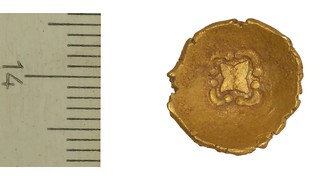 An extremely rare "rainbow cup" coin minted more than 2,000 years ago by the Celts has been found next to a river in Germany, according to the Bavarian State Archaeological Collection.
An extremely rare "rainbow cup" coin minted more than 2,000 years ago by the Celts has been found next to a river in Germany, according to the Bavarian State Archaeological Collection.
The gold coin, minted in the second or first century B.C., features a rare design of a four-pointed star surrounded by arches on one side, said Bernward Ziegaus, a senior curator in the State Archaeological Collection's numismatic department who is studying the coin. Like other rainbow cups, the coin is curved.
"The name rainbow cup coins come from the legend that they are drops of gold that fall to earth at the end of a rainbow," Ziegaus told Live Science in an email. "Another legend about these Celtic coins tells us that these coins can only be found by Sunday children," or a child of fortune.
"In fact, the finder was born on a Sunday and is indeed a Sunday child, a lucky child!" he said.
The finder, a collaborator with state archaeological officials, discovered the coin this spring about 45 miles (70 kilometers) west of Munich on the Lech River in the southern state of Bavaria.
The "heads" side of the 0.5-inch-wide (13 millimeters) coin "shows a stylized human head with a large eye," with the nose and lips depicted as dots, Ziegaus said. A metal analysis revealed that the coin is 77% gold, 18% silver and 5% copper.
There are only three known rainbow cups with the star-and-arch motif. "The interpretation of the motive is difficult," Ziegaus said. "The star is perhaps a symbol for the four cardinal points, the arches are to be understood as signs for the horizon and the rising and setting of the moon.
To read the complete article, see:
Lost 'rainbow cup' coin minted by Celts 2,000 years ago discovered in Germany
(https://www.livescience.com/archaeology/lost-rainbow-cup-coin-minted-by-celts-2000-years-ago-discovered-in-germany)
GOLD MEDALLIONS FOUND IN NORWAY
Paul Horner passed along this story of a chance find of a gold necklace in Norway. Thanks. -Editor
The cache comprised nine Norwegian gold medallions and gold pearls that once formed an opulent necklace, as well as three gold rings.
Archaeologists say the find is unique because of the design on the medallions -- a type of horse from Norse mythology.
Bore, who dreamt of becoming an archaeologist as a child, made the discovery on a farmer's land near Stavanger in August after he bought a metal detector on his doctors' recommendations to get more exercise.
The jewels, which weigh a little more than 100 grammes, were discovered to date from around 500 AD.
"It's the gold find of the century in Norway," said Ole Madsen, the head of the University of Stavanger's Museum of Archaeology.
"To find that much gold all at once is extremely unusual."
To read the complete article, see:
Amateur makes 'gold find of the century' in Norway
(https://www.france24.com/en/live-news/20230907-amateur-makes-gold-find-of-the-century-in-norway-1)
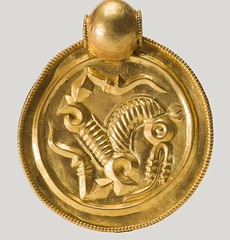
Thanks also to Arthur Shippee and Dick Hanscom for passing along other versions of the article. Dick's Daily Mail piece has some great photos. -Editor
To read the other articles, see:
Man buys a metal detector for fun and makes the ‘gold find of the century' in Norway
(https://www.nbcnews.com/news/world/norway-man-metal-detector-makes-gold-find-century-rcna104020)
A Norwegian man needed a hobby. His new metal detector found a showy 1,500-year-old gold necklace
(https://www.msn.com/en-us/money/markets/some-pendants-rings-and-gold-pearls-norwegian-archaeologists-say-it-s-the-gold-find-of-the-century/ar-AA1gnAZ7)
Amateur makes 'gold find of the century' in a farmer's field after buying a metal detector because his doctor told him to get more exercise
(https://www.dailymail.co.uk/sciencetech/article-12492331/Amateur-makes-gold-century-farmers-field-buying-metal-detector-doctor-told-exercise.html)
'THE CROWN' GIANT COIN FOR ELIZABETH II
The East India Company has produced a gigantic "coin" honoring Queen Elizabeth II. Thanks to Ken Spindler for passing this along. -Editor
Made from almost 8 pounds of gold and some 6,426 diamonds, a new coin honoring the life of Queen Elizabeth II may be among the most valuable coins of all time.
In fact, the creator of this one-off luxury object has valued it at around $23 million.
Unveiled on Monday, days before the first anniversary of Queen Elizabeth's death, the commemorative coin as a whole is not considered legal tender in the UK (although the denominations of coins contained within the design are). It was produced by the East India Company, a luxury lifestyle brand with rights to the name of the corporation that once controlled large swathes of Britain's empire.
Dubbed The Crown
, in a press release, the company described its creation as an objet d'art.
The coin has a diameter of over 9.6 inches, making it wider than an NBA-regulation basketball and its design comprises almost a dozen 24-carat gold coins nestled in beds of diamonds.
The center coin weighs over 2 pounds, while the smaller ones around it each weigh 1 ounce and feature either portraits of the late monarch or depictions of virtues including truth, justice and courage.
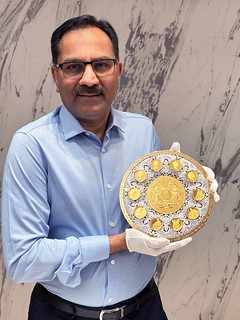 On one side, thousands of diamonds have been arranged to resemble the UK's flag, while the setting of the reverse was inspired by the late queen's tiaras.
On one side, thousands of diamonds have been arranged to resemble the UK's flag, while the setting of the reverse was inspired by the late queen's tiaras.
The original East India Company operated for almost 300 years before its dissolution in 1874. Indian-born businessman Sanjiv Mehta acquired the rights to name — and the accompanying coat of arms — in 2005 before relaunching it as a lifestyle brand five years later.
His modern reincarnation sells luxury products including jewelry, homeware and commemorative coins that capture moments in history for contemporary enthusiasts and future generations to treasure,
according to the company's website.
To read the complete article, see:
Elizabeth II honored with basketball-sized gold coin worth ‘around $23 million'
(https://www.cnn.com/style/queen-elizabeth-coin-east-india-company/index.html)
GAZA DENTIST MAKES GOLD COINS
Arthur Shippee passed along this cool story from the Jerusalem Post of a Gaza dentist creating ultra-lightweight gold coin tokens. -Editor
A Gaza dentist has developed ultra-lightweight gold coins to allow people without much money to access to one of the most widely used savings methods across the Middle East.
"The idea stemmed from the community's need to own gold amid the difficult living conditions the people live in," said Ahmed Hamdan, who developed the coins, which range in weight from half a gram to 10 grams.
"We have made gold available to people of all categories, gold that even the poor and those with low income can get some," Hamdan said.
The 21-carat-gold coin, which bears the image of the Dome of the Rock shrine in Jerusalem on one face with the word Palestine underneath, is licensed and stamped by the Ministry of Economy in Gaza, run by the Islamist Hamas group since 2007.
Gaza has no currency of its own and uses the euro, US dollar, Israeli shekel, and Jordanian dinar in their daily lives. As in many parts of the Middle East, mistrust of banks means many people prefer to keep their savings in gold.
To read the complete article, see:
Gaza dentist makes gold coins in lieu of currency
(https://www.jpost.com/middle-east/article-757986)
KARL GOETZ MEDALS ON BOOM AMERICA
In a press release published this week, Dale Krueger notes he will discuss Karl Goetz medals on an upcoming episode of the Boom America TV show. -Editor
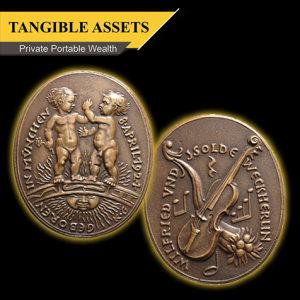 Tangible Assets LLC, a company specializing in the collection and appreciation of Karl Goetz medals, is thrilled to announce its upcoming feature on the renowned Boom America TV show. Boom America is a recognized platform that spotlights pioneering companies and their impactful offerings. The inclusion of Tangible Assets LLC on the show signifies the company's dedication to promoting the rich historical and artistic value of Karl Goetz medals.
Tangible Assets LLC, a company specializing in the collection and appreciation of Karl Goetz medals, is thrilled to announce its upcoming feature on the renowned Boom America TV show. Boom America is a recognized platform that spotlights pioneering companies and their impactful offerings. The inclusion of Tangible Assets LLC on the show signifies the company's dedication to promoting the rich historical and artistic value of Karl Goetz medals.
Dale Krueger, President of Tangible Assets LLC, became a passionate Coin Collector in the late '60s. As a child, he cultivated an interest by collecting coins, eventually transitioning to high-grade slabbed coins in the 1980s. Dale's passion for Barber Quarters led him to a remarkable milestone: a complete set of MS Barber Quarters, which he auctioned off through Heritage in 2000. However, his introduction to Karl Goetz medals and "The Medals of Karl Goetz" by Gunther Kienast marked the turning point of his collecting journey. These medals, with their satirical, historical, and beautifully crafted designs, captured Dale's attention. He made it his mission to gather, understand, and treasure these artistic embodiments of history.
Tangible Assets LLC showcases numerous subsets of Karl Goetz medals, offering a diverse range for every collector. From satirical medals to tokens commemorating family events such as baptisms, weddings, and graduations, there's truly something for everyone. Remarkably, Dale has amassed one of the most extensive collections with over 1500 medals, with themes covering various subsets like World War One and historical motifs to more esoteric niches like skull and skeleton related medals.
Reflecting on his experience, Dale Krueger, President of Tangible Assets LLC, shared, "Loved being on Boom America! I was able to mingle with successful entrepreneurs, marketers, and networkers...and work collaboratively with all of them."
Karl Goetz medals offer an exciting avenue for diversification, standing apart from traditional investments like crypto, gold, and stocks. They represent an intersection of art, history, politics, tangible assets, and collectability. As the interest in alternative assets grows, Goetz Medals present both a valuable investment and a journey of discovery, filled with enjoyment and historical exploration.
About Tangible Assets LLC-
Tangible Assets LLC specializes in curating and celebrating Karl Goetz medals, reflecting the intersection of art, history, and tangible investments. With a remarkable collection of over 1500 medals amassed by President Dale Krueger, the company offers a diverse range of satirical, historical, and intricately designed pieces. Karl Goetz medals provide a unique opportunity for collectors and investors to engage with captivating artifacts that bridge the realms of art and valuable assets.
About Boom America-
Boom America is a life-changing show hosted by none other than the legendary Kevin Harrington, a pioneer of the infomercial industry and an original star of the hit TV series Shark Tank. Kevin leads a powerhouse team of business experts on a mission to take various innovative companies to new heights. The real work begins as the chosen companies embark on a journey of explosive growth, guided every step of the way by the seasoned professionals of Kevin's team. Get ready for a game-changing ride in 2023!
1882 CARL SONTAG $50 GOLD SLUG MEDAL
This Morphy Auctions lot contains an interesting California theatrical medal made from a $50 gold slug. -Editor
CARL SONTAG 1882 GOLD THEATRICAL MEDAL, GERMAN THEATER, SAN FRANCISCO.
Stunning hand made large gold and silver medal from The German (Baldwin) Theater in San Francisco, California. Central brass cast copy of an 1852 US $50 gold octagonal coin with presentation engraved on reverse, "Die Deutschen, San Francisco, Ihrem Carl Sontag, San Francisco, Cal, 12th Feb. 1882". The medal was presented to Sontag on his final evening of a 3-month appearance at the Baldwin Theater. The medal measures 3 - 1/4" tall by 2 - 1/2" wide, and has a gross weight of 70.4 grams. With the exception of a few missing flowers at the top, the medal is in excellent original condition. The medal appears to be made in 14k gold, but the karat is untested.
The following is an excerpt from an article that appeared in The San Francisco Examiner, Monday, February 13th, 1882:
"Carl Sontag, who has appeared at the Baldwin Theater every Sunday evening for the past three months, made his farewell bow last night before an audience that fairly packed the house from orchestra to the topmost gallery. The play chosen for the great artist's final exit from the stage of his many triumphs was Freitag's brilliant comedy, "The Journalists", which has become a standard play on the German stage. It is as renowned for its literary, merit and extremely humorous and brilliant dialogue as it is for ingenious construction. Mr. Sontag found in the role of Conrad Bolz a peculiarly humorous, yet elegant characterization, a congenial task, and the frequent plaudits of the enthusiastic audience evidenced the fact that on this, his last representation, the great artist scored another hit......
"The pleasantest feature of the evening was at the end of the play, when Mr. Kadelburg came forward on the open stage and in a hearty manner said: "It is a good old and worthy custom to present to an honored guest at parting a token as an earnest of the regard and esteem in which he is held. It is therefore my pleasant duty, in the name of your many friends, to present you with this souvenir.
"It is a coin characteristic of California, and itself tells the history of the state; and it will recall to you the story of those Pioneers who struggled to make our state what it is and to whom we also owe thanks for having been able to raise the standard of German art in the extremest West. This honored coin is wreathed with the laurel crown you so richly earned, and may you on your native soil in the old Fatherland sometimes think of those friends whom you have left in far away California, who will remember as long as German art exists the name of Carl Sontag. He thereupon handed Mr. Sontag an elegant velvet case, in which was enclosed a slug of 1852, encircled with a golden crown of laurels and headed by the usual histrionic emblems of mask, scroll, etc. The entire piece was suspended from a plain and heavy gold pin by a silken ribbon of red, white and blue.
"On the obverse side of the coin was the inscription: "To true merit this crown. The Germans of San Francisco to Carl Sontag, February 12, 1882". Mr. Sontag, in an extremely agitated manner, replied as follows: "From the first hour I arrived here I met nothing but kindness ad good-will. I ought to say not only from the first hour but even earlier, for before my arrival across the bay I was met by Mr. Kadelburg who, in behalf of my colleagues, in the first place, proffered me every service and friendly help, and from the directrice, stage manager and stage personnel. I have met with nothing but the most flattering cordiality. Not alone among the artistic circle, but socially and in private life, I met with a reception so hearty and cordial that must ray during my whole career I never left a city with a greater feeling of regret, and with deep sorrow I leave this loved spot..."
Carl Sontag (Karl Sunday) was a son of actress Franziska Martloff; the singer Henriette Sontag and the actress Nina Sontag were his half-sisters from Franziska Sontag's marriage to Franz Sontag. According to the will of his parents, in no case should he become an actor. So he came to a polytechnic school which he soon had to leave. He then did an apprenticeship as a bookbinder, which he also completed. Already at this time he was also working as a writer in order to be able to afford to go to the theater. He took advantage of his mother's absence to introduce himself to the manager of the court theater in Liège, who accepted him as an extra actor on January 1, 1848; he chose Holm as his stage name. So Sontag was able to successfully compete at the royal in 1848 at the age of 20.
To read the complete lot description, see:
CARL SONTAG 1882 GOLD THEATRICAL MEDAL, GERMAN THEATER, SAN FRANCISCO
(https://auctions.morphyauctions.com/CARL_SONTAG_1882
_GOLD_THEATRICAL_MEDAL__GERMAN_THE-LOT560867.aspx)
REYMERSWAELE'S "TWO TAX COLLECTORS"
We've often discussed paintings showing scenes of coins of other numismatic connections. Often these paintings are used as cover art for books on money or coinage. Last year Ron Haller-Williams alerted us to Reymerswaele's "Two Tax Collectors". So I was familiar with the work when I saw it appear yesterday in a Wall Street Journal ad from dealer M.S. Rau in New Orleans. Here's information from their website. -Editor
Marinus van Reymerswaele
c.1490 – c.1546 | Dutch
The Tax Collectors
16th century
Oil on wood panel
Marinus van Reymerswaele stands among the greatest and most beloved artists of 16th-century Antwerp. Entitled The Tax Collectors, this oil on board original exudes the technical skill and life-like vibrancy for which the artist is renowned.
In a quiet interior scene, two men sit at a green table covered in coins, jewels, and empty moneybags. While the man in the red turban-like head wrap calmly records transactions in his leger, his companion grimaces, still clutching an empty coin purse. A meticulous painter, Marinus takes care to painstakingly render each minute detail with tremendous accuracy. Marinus has precisely lined each fold in their garments and each wrinkle on the men's faces and hands. He further demonstrates his skill by capturing the reflections of light within the reflective gemstones and brass candlestick. His treatment of the men's faces is caricatured but still believable, setting up an excellent satire on the tax collectors. Overall, the artist has imbued the scene with a lifelike vibrancy with a bold palette and confident application of paint. For further explanation of the incredible details in this work of art, please see the pictorial key.
The economic and cultural boom of 16th-century Antwerp effectively made the once-small Flemish city the financial center of the world. The greatest artists from all over the continent were drawn to the prosperity and sophistication of Antwerp. Without a doubt, a scene of two misers would have been immediately recognizable to a 16th-century European. The subject was one of the most popular of its time, gracing the collections of queens, kings and private citizens alike. All would have understood the image as satirical, poking fun at the two tax collectors wearing gaudy, outdated clothing with contorted faces.
Marinus van Reymerswaele, Dutch by birth, spent the majority of his life living and working in Antwerp. In 1509, he registered with the Antwerp Guild of St. Luke, cementing his position within the artistic fabric of the city by producing copies of beloved artworks. Nearly 500 years later, Marinus's works reside in museums worldwide, including the Louvre in Paris, National Gallery in Washington D.C., and the Museo del Prado in Madrid. One version resides in Windsor Castle, within the King's private quarters, and the Royal Liechtenstein collection acquired its own in 2008. It, like ours, displays the same remarkable color and expressive faces that characterize our masterpiece. Of these comparable paintings, only the Royal Liechtenstein example is equal to ours in quality and condition.
Circa 1540
Panel: 42" high x 31 3/4" wide Frame: 48 1/2" high x 38 5/8" wide x 3 3/4" deep
I reached out to the company for more information and the asking price. -Editor
M.S. Rau Chief Marketing Officer Lori Paige writes:
"The asking price is $3,850,000. For a 16th century work, this piece is in excellent condition, with vibrant colors that draw you in and add to the overall narrative of the painting."
To read the complete item description, see:
The Tax Collectors Attributed To Marinus Van Reymerswaele
(https://rauantiques.com/products/the-tax-collectors-attributed-to-marinus-van-reymerswaele)
To read the earlier E-Sylum article, see:
NOTES FROM E-SYLUM READERS: SEPTEMBER 19, 2021 : Numismatic Book Cover Idea
(https://www.coinbooks.org/v24/esylum_v24n38a10.html)
LOOSE CHANGE: SEPTEMBER 10, 2023
Here are some additional items in the media this week that may be of interest. -Editor
Mark Hotz published a Numismatic News article about the numismatics of tiny Dunbar, PA. While typically focusing on National Bank Notes, Mark veers into the interesting world of toll road scrip. See the complete article online for more. -Editor
This month we will visit picturesque Dunbar, Penn., an old coal and iron town nestled in the foothills of Chestnut Ridge, between Connellsville and Uniontown in Fayette County, a subdivision located south of Pittsburgh in the southwestern corner of the state. I recently acquired a nice note from this town and had the opportunity to visit it and find its bank. We will also have the chance to visit an old Turnpike Gate in Western Maryland.
Dunbar is located roughly halfway between Connellsville and Uniontown and can be found just a few miles off U.S. Route 119 to the southeast via State Route 1053. This local road meanders and winds before reaching Dunbar, which sits rather forlornly along the Dunbar Run. Although once a rather prosperous coal town, the population boomed in 1910 at 2,000 and has shrunk to half that today. It is typical of the many now shattered coal towns in this part of Pennsylvania.
After visiting the LaVale gate, I became intrigued with the idea of turnpike roads, as I knew that many of these issued their own obsolete currency and scrip. When I got home, I did some research into this. I was unable to locate any issue of currency from the particular gate that I visited in LaVale, but I did find that many Turnpike Road companies along the East Coast did issue currency, as well as scrip that was accepted at turnpike gates.
In general, the obsolete currency notes issued by the turnpike companies themselves are generally available to collectors. I have included a photo of a $1 note issued by the Pittsburgh & Butler Turnpike Road Company in 1822. This type of currency was an obligation of the corporation and issued to fund the construction and maintenance of the turnpike road itself. The small change scrip notes, redeemable for bank notes or accepted for tolls at the gates, are generally considerably scarcer.
To read the complete article, see:
Coal Mining and Toll Scrip
(https://www.numismaticnews.net/paper-money/coal-mining-and-toll-scrip)
Steve Roach had an article in Coin World about the recent Bill Kelly Sutler token collection sold by Stack's Bowers. Here's an excerpt - be sure to read the complete article online. -Editor
U.S. coins in small denominations were hard to come by in the Civil War, and merchants took matters in their own hands by producing Civil War tokens. These private issues can largely be divided in three groups: store cards, patriotic tokens and sutler tokens.
Sutlers, in their broadest definition, were civilian merchants who sold provisions to armies and established temporary shops around soldiers' camps near battlefields. Their tokens were most often made of brass and were produced by many of the same shops that produced patriotic tokens and store cards. For collectors wanting to learn more, David Schenkman's 1983 reference Civil War Sutler Tokens and Cardboard Scrip is useful, as is Whitman's A Guide Book of Civil War Tokens.
The privately issued pieces were used primarily in the Midwest and Northeast and the Whitman reference explains that these were usually called checks
in the era of their use. They were issued by licensed contractors who typically operated camp stores in connection with traveling military regiments and companies, although a few had fixed locations such as military posts.
The sutler era was short lived, and on July 26, 1866, the office of sutler was abolished by an act of Congress and the licensees were generally designated as post traders. While many of the examples in the Kelly collection represented the rarest examples, more common ones can be found for around $200 and up.
To read the complete article, see:
Sutler tokens from collector Bill Kelly sold in auction
(https://www.coinworld.com/news/us-coins/sutler-tokens-from-collector-bill-kelly-sold-in-auction)
Yesrterday my daughter texted me a link to this TikTok video about $2 bills. It's amusing for a knowledgable collector to watch, and a painful reminder of the truth of the statement that most of the internet is made up of five or six websites that are filled with content taken from the other five or six. The 300,000+ followers of The Money Manual are treated to a woman reading sentences from a recent Yahoo Finance article with the clickbait headline of "Check Your $2 Bills — They Could Be Worth Upwards of $4,500."
Can't you wait to find out if her really old bills from 2013 and 2003 are worth big buckaroos? *Sigh* I got a smiley emoji back from my daughter when I texted "Her $2 bills are worth $2." -Editor
To watch the complete video, see:
https://www.tiktok.com/t/ZT82Gg8a1/
To read the Yahoo Finance article, see:
Check Your $2 Bills — They Could Be Worth Upwards of $4,500
(https://finance.yahoo.com/news/check-2-bills-could-worth-153919942.html)
MONEY ART OF STACEY LEE WEBBER
I recently came across this article about a money artist I hadn't encounterd before: Stacey Lee Webber. Great work! -Editor
Contemporary artist, Stacey Lee Webber cherishes working with money, coins, banknotes whose history is physically evident. Her work is meticulous, pushing social and political boundaries to create exquisite everyday recognisable objects. By using money in her craft, Webber strives to create art that interests a broad range of viewers and challenges preconceived notions of the objects that surround them.
Stacey Lee Webber always wanted to be an artist but was uncertain what form of art her passion was heading, until she studied metal-smith and jewellery making and with her love of fire this medium was ignited. In 2008 Webber was awarded a Master of Fine Arts in metal-smithing and jewellery making from the University of Wisconsin. Seven years of study in a specialised area of creating art with nonferrous metals, (no iron or steel) working with copper, brass, bronze, silver, gold and platinum to create unique jewellery and sculptures.
In Stacey's hands, the coin is transformed, but without losing its essence. It is there where it dies and is reborn to become part of a different whole. I redesign them, rework them, destroy them and ultimately resurrect them into something new to treasure. I bring the serious and amusing together in beautiful metalwork that keeps part of its story ever hidden.
Webber's sculpture of a hammer made from copper pennies is symbolic of the value of labour and encapsulates how work and money has changed over time: As a contemporary metal-smith, I cherish working with found materials whose history is physically evident. My work is often described as meticulous, pushing the boundaries of everyday, recognisable objects to the point that they are unidentifiable. Through material, I strive to make artwork that interests a broad range of viewers and challenges their preconceived notions of the objects that surround them.
To read the complete article, see:
Stacey Lee Webber: From Resurrection to Insurrection
(https://banknoteartconcept.com/stacey-lee-webber-from-resurrection-to-insurrection/)
FEATURED WEBSITE: MAGIC TOKEN SOCIETY
This week's Featured Web Site is the Magic Token Society.
We are a vibrant community of magic token collectors, the Magic Token Society serves to support this fascinating hobby by engaging enthusiasts from across the world, providing exclusive tools and resources, and acknowledging remarkable token collections.
Officially there are 363 actual tokens that are listed in the Tams Journal Volume 18 Number 5 October 1978 "Magicians Tokens" written by F. William Kuethe, Jr. is the official guidebook and reference for the Magic Token Society!
Magicians tokens are coins and palming disks that are made specifically for magicians. They have been made of many materials like copper, silver, brass, bronze, nickel, base metal, wood, plastic and even paper.
They are often stamped with the magician's name and likeness. If they were also used for sleight of hand, they would be made with special features.


